
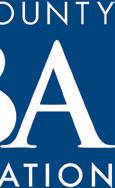







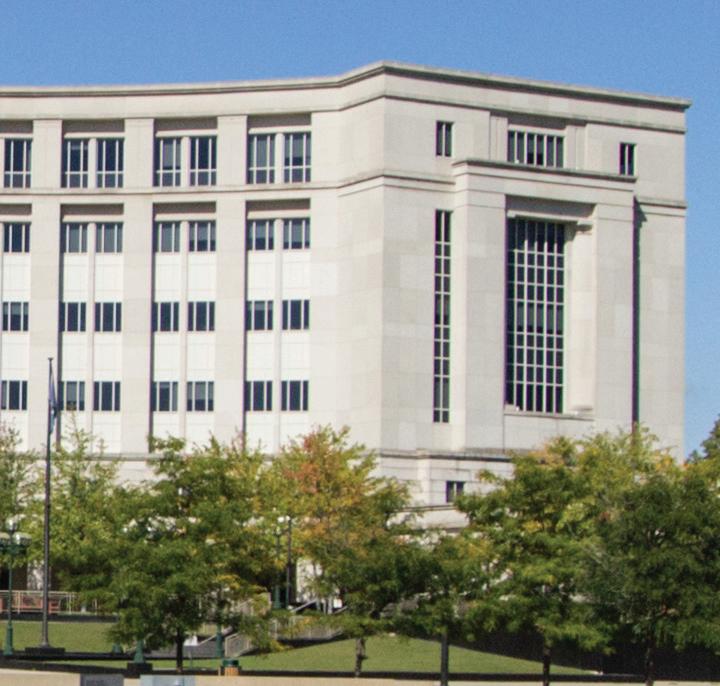



LACHES www.ocba.org | April 2024 | Number 667 The Nuts and Bolts of Appeals in Michigan Evaluating Claims to ‘Aggrieved Party’ Status and ‘Standing’ in Circuit Court Zoning Actions An Overview of Final Orders and Why They Matter



















CALL KATHY BROOCK 248.318.4504 | kathy@maxbroockhomes.com www.kathybroock.com 275 SOUTH OLD WOODWARD AVENUE. BIRMINGHAM, MICHIGAN 48009 MICHIGAN’S #1 REALTOR® | 14 CONSECUTIVE YEARS | 4TH GENERATION LEGACY


2023-2024 BOARD OF DIRECTORS

PRESIDENT
Melinda N. Deel
PRESIDENT-ELECT
Dean M. Googasian
VICE PRESIDENT
Sarah E. Kuchon
TREASURER
Aaron V. Burrell
SECRETARY
Kari L. Melkonian
EXECUTIVE DIRECTOR
Jennifer Quick
LACHES EDITORIAL BOARD
Victoria B. King
Syeda F. Davidson
Coryelle E. Christie
Lanita Carter
DIRECTORS
Victoria B. King
Syeda F. Davidson
Julie L. Kosovec
Emily E. Long
Jennifer L. Lord
Moheeb H. Murray
Kimberley Ann Ward
Kenneth F. Neuman
Layne A. Sakwa
Jonathan B. Frank
ABA DELEGATE
James W. Low
Thamara E. Sordo-Vieira
Carmen E. Moyer
Fahd Haque
THE MISSION OF THE OAKLAND COUNTY BAR ASSOCIATION IS TO SERVE THE PROFESSIONAL NEEDS OF OUR MEMBERS, IMPROVE THE JUSTICE SYSTEM AND ENSURE THE DELIVERY OF QUALITY LEGAL SERVICES TO THE PUBLIC.
Articles and letters that appear in LACHES do not necessarily reflect the official position of the Oakland County Bar Association, and their publication does not constitute an endorsement of views that may be expressed. Readers are invited to address their own comments and opinions to:
LACHES | Oakland County Bar Association 1760 S. Telegraph Rd., Ste. 100 Bloomfield Hills, MI 48302-0181
Publicationandeditingareatthediscretionoftheeditor.













Telegraph, Ste. 100, Bloomfield Hills, MI 48302-0181.
CONTENTS APRIL 2024 OAKLAND COUNTY BAR ASSOCIATION
S. Telegraph Road, Suite 100 Bloomfield Hills, Michigan 48302-0181 (248) 334-3400 • FAX (248) 334-7757 www.ocba.org FEATURES The Nuts and Bolts of Appeals in Michigan Whether you prevail or lose in the trial court, you may face an appeal. This guide will help you understand the process. ByStephenT.McKenney 10 It’s Finally Over — or Is It? An Overview of Final Orders and Why They Matter To avoid missing the deadline to appeal, it’s crucial to know when you have a final order. ByKariL.MelkonianandErinJ.Rodenhouse 14 So, You Think You’re Special: Evaluating Claims to ‘Aggrieved Party’ Status and ‘Standing’ in Zoning Actions A party must satisfy recently changed standards to invoke the circuit court’s jurisdiction over a zoning matter. ByMatthewJ.Zalewski 16 Circuit Court Civil Appeals: A Brief Primer on Practice and Procedure Appealing from the district or municipal court requires specialized knowledge and a specific mindset. ByDanielJ.McCarthy 20 DEPARTMENTS President’s Page 2 E.D.itorial 4 OCBA Calendar of Events 6 Professional Development and CLE 8 New Lawyers 24 On the Circuit 26 Jury Trials and Utilization 27 Committees 28 In Pro Per 29 Foundation 30 New OCBA Members 31 OCBA Staff Directory 31 Adjourned 32 PUBLISHING PARTNER 5750 New King Drive, Ste. 100 Troy, MI 48098 Phone: 248.691.1800 / Fax: 248.691.4531 LACHES is published exclusively for the Oakland County Bar Association by Hour Custom Publishing, a division of Hour Media, L.L.C. Copyright © 2024. All rights reserved. No portion may be copied or published without the express written consent of the publisher. The views expressed in this publication are not necessarily those of OCBA or Hour Media. LACHES
1760
LACHES
is the monthly (except July and December) publication of the Oakland County Bar Association, a Michigan nonprofit corporation, 1760 S. Telegraph, Ste. 100, Bloomfield Hills, MI 48302-0181. Copyright © 2024 Oakland County Bar Association. The price of an annual subscription ($20) is included in member dues. Periodical postage paid at Bloomfield Hills, MI 48304 and additional entry offices. Postmaster: Send address changes in writing to Oakland County Bar Association, 1760 S.
(ISSN 010765)
www.ocba.org 1




















This month’s column highlights the OCBA’s Inn of Court program, which is a very popular and valuable member benefit. Did you know that the Oakland County Bar Association has one of only five charters in Michigan for an American Inns of Court chapter? e Inns of Court is an association of lawyers, judges, and other legal professionals from all practice levels and backgrounds who share a passion for professional excellence.
rough monthly meetings, members can build and strengthen professional relationships; discuss fundamental concerns about professionalism and pressing legal issues of the day; share experiences and advice; encourage passion and dedication for the law; provide mentoring opportunities; and advance the highest levels of integrity, ethics, and civility.
When my husband, Ryan, and I were newer attorneys, we participated in the OCBA Inn of Court program. It was an impactful and invaluable experience and one that aided both of us in the practice of law. We met so many wonderful attorneys who were eager to share their expertise in a fun and collegial atmosphere. e collaborative nature of the program is perfect for sharing ideas and learning tips and tricks from moreexperienced attorneys. I would highly recommend this program not only to newer attorneys, but also to attorneys who are looking for an opportunity to teach, mentor, and share their hard-earned knowledge.
e concept of the American Inns of Court (the Inn) is based upon the four English Inns of Court in London and their centuries-old tradition of senior lawyers and judges educating successive generations of advocates, with a focus on civility and professionalism. e Inn has gained a national and international reputation as an organization that bridges the gap between formal law school education and legal practice by offering career-long continuing education in the common-law tradition.
e Inn is one of the very few legal organizations that involve the whole spectrum of the profession: from Supreme Court justices to every
OCBA Inn of Court
By Melinda N. Deel
level of federal and state judges, from small firms to large firms, and from legal educators to law students. All Inn participants have the opportunity to learn and grow without limit. is uniquely nonpartisan association encourages meaningful mentoring relationships. Inn members are divided into “pupillage teams,” with each team consisting of members from every level of practice experience. Each pupillage team is tasked with presenting one educational program that year. Pupillage team members meet informally outside of the monthly Inn meetings to plan and rehearse their assigned programs. Students and less-experienced attorneys learn from the more-experienced attorneys and judges in an environment that fosters collegiality, mentoring, professionalism, and informal discussion about the practice of law, principles, and methods. Academics, specialized practitioners, and complementing generalists provide a mix of skill, theory, experience, and passion. is fluid, side-by-side approach allows seasoned judges and attorneys to help shape students and newer lawyers with practical guidance in serving the law and seeking justice.
OCBA Inn participants are divided into seven different teams of eight to 10 people. Each team is led by a judge and contains masters (experienced attorneys) who help guide the team and mentor the newer attorneys and law students. e chapter meets monthly on the second Wednesday of the month at the OCBA in the evening from September through May (with December off ). e September meeting is a fun kickoff meeting and orientation where participants meet their teammates. e May meeting includes the annual dinner to celebrate the year. Each team puts together a presentation for one of the meetings that is designed to help you hone your skills, learn a new skill, or learn about a different area of the law. Prior to the meeting during which you present, you will meet with members of your team three to four times, either in person or virtually, to plan your presentation. e mentors on your team often make themselves available to answer questions

you may have outside of the Inn program. For the rest of the meetings, the other teams present on a legal topic, which provides you with the opportunity to learn about a number of different legal subjects. You may also ask questions of the presenters and offer feedback to them. Food and refreshments are served at each meeting, and there is time for networking after each presentation. e current cost to participate for the full year is $95 for associates (in practice zero to five years) and $180 for barristers (in practice six to 15 years), judges, and masters. ere is no cost for law students to participate. e cost covers the dues to the American Inns of Court, attendance at the September kickoff, staff time, and the food and refreshments at six meetings. ere is an additional cost to attend the May annual dinner.
OCBA Inn participants are divided into seven different teams of eight to 10 people. Each team is led by a judge and contains masters (experienced attorneys) who help guide the team and mentor the newer attorneys and law students.
e OCBA is very proud that our Inn of Court chapter was recently recognized for the second year in a row at the Platinum level in the American Inns of Court’s Achieving Excellence program. An Inn is recognized at the Platinum level when it has met the highest standards of effective practices in each of the five core competencies of Inn management: administration, communications, program development, mentoring, and outreach activities.
If you would like more information on the OCBA Inn of Court, please visit ocba.org/ inns.

Melinda N. Deel is the president of the Oakland County Bar Association.
PRESIDENT’S PAGE 2 LACHES MAGAZINE



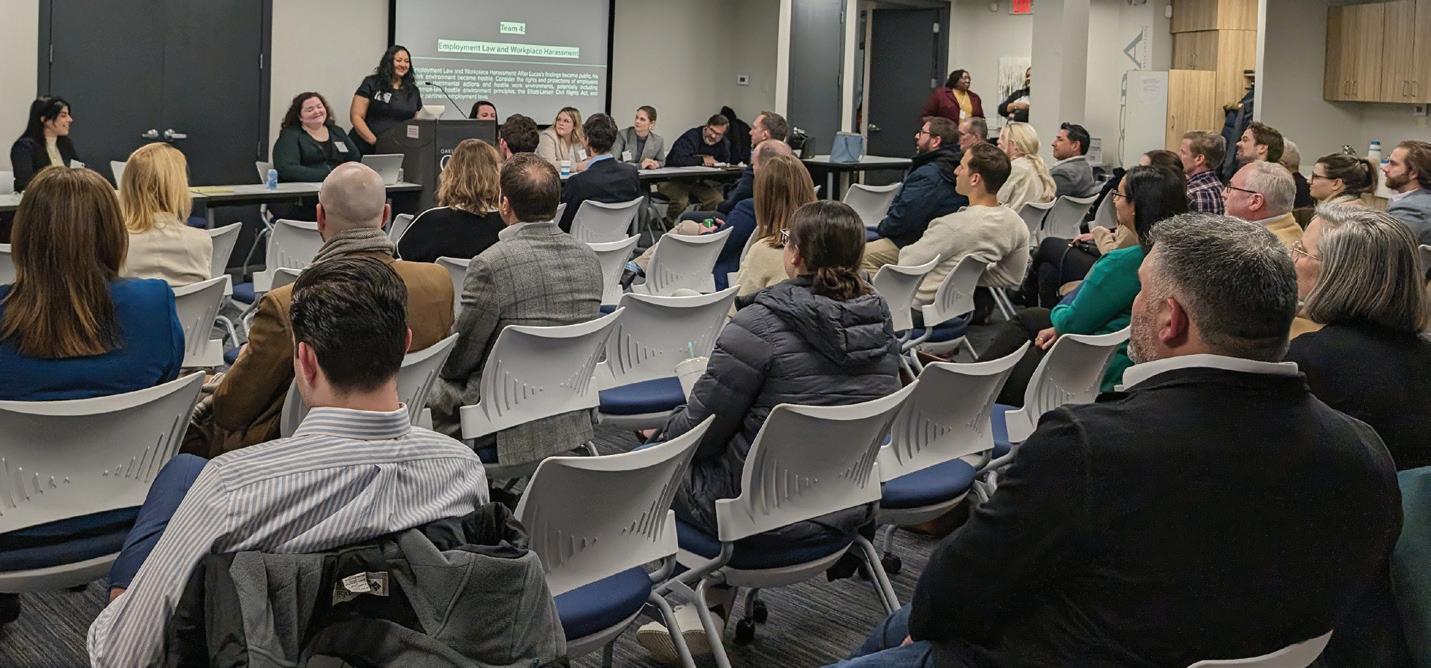


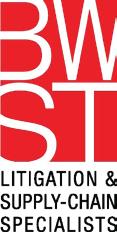
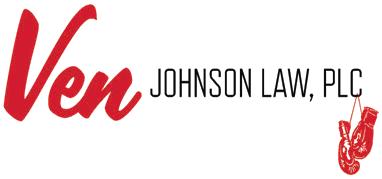






 Team 4, led by Judge Sima Patel, shares its presentation on employment law and workplace harassment with fellow Inn members in February 2024.
OCBA Inn of Court members participate in small-group discussions during Team 5’s presentation on civility and ethics in March 2023.
Participants enjoying dinner and great conversation after the Team 7 presentation during the year-end annual dinner at The Village Club in May 2023.
Team 4, led by Judge Sima Patel, shares its presentation on employment law and workplace harassment with fellow Inn members in February 2024.
OCBA Inn of Court members participate in small-group discussions during Team 5’s presentation on civility and ethics in March 2023.
Participants enjoying dinner and great conversation after the Team 7 presentation during the year-end annual dinner at The Village Club in May 2023.
www.ocba.org 3 2023–2024 Elite Supporters Learn. Lead. Succeed. PLATINUM $10,000+ GOLD $7,500–9,999.99 BRONZE $2,500–4,999.99 ATTORNEYS AT LAW “Elite Supporters” consist of distinguished firms whose sponsorship of 2023-2024 OCBA events total $2,500 or more. There are four supporter levels. If you’d like more information on this program, contact Jennifer Quick at jquick@ocba.org. Elite Supporter levels: PLATINUM ($10,000+), GOLD ($7,500+), SILVER ($5,000+), and BRONZE ($2,500+)
OCBA Inn of Court members meet their teammates and learn more about the program during the September 2023 orientation and kickoff mixer at The Iroquois Club.
Vote for Your Favorite Candidates in the 2024 OCBA Board of Directors Elections
By Jennifer Quick
On May 1, 2024, all OCBA members who are eligible to vote will receive a link to the online ballot to vote for the candidates of their choice for the OCBA board of directors. It is an opportunity for our members to have a say in who will help shape the future of the association. And yet, each year, I am surprised at how few of our members cast their votes.
I am happy to report that we did see an increase in the percentage of eligible voters who cast a vote during the 2023 election compared to the previous three elections. In 2023, 27% of eligible voters participated in the OCBA board election, up from 24.18% in 2022, 22.85% in 2021, and 24.95% in 2020.
I speculate that the pandemic and having fewer in-person events played a role in the engagement of our members, and that led to lower voter turnout.
I hope the rise in OCBA voter participation continues. Our highest voter turnout since the OCBA started conducting the election online was 38.04%. Let’s see if we
can beat that this year.
To help make it easy for our eligible members to vote, I want to answer some common questions.
1. How do I access the ballot? e OCBA board of directors election is proctored electronically. In addition to having the link to the ballot on our website once the ballot is open, we also send out the link to all eligible members via Constant Contact right at the time the ballot is scheduled to open. We will also send a couple of reminder emails before the ballot closes to all who have not yet cast their vote.
2. I’m an eligible voter, but I never received the ballot. What can I do? We do still have some members who do not use email or whose work email servers block our emails coming from Constant Contact. We do look at the report of blocked emails when we send out a campaign and



then reach out to those members individually to help make sure they receive the link to vote. However, if you fall into this category and would like to vote, you can always contact me at jquick@ocba.org or (248) 334-3400 and let me know for whom you’d like to cast your vote. I am able to go into your profile and cast your vote manually.
3. I’m not familiar with some or any of the candidates. How can I learn more about them? We ask all board candidates to put together a bio and profile highlighting their work, board, and OCBA experience. is is a great way to get to know the candidates. e Nominating Committee also works hard to try to put together a diverse pool of candidates — and not just by race, gender, or ethnicity. ey also look at potential candidates’ practice area backgrounds, the size of their firms, and other similar factors to try to make sure there is broad representation that reflects
2024 OCBA BOARD OF DIRECTORS CANDIDATES

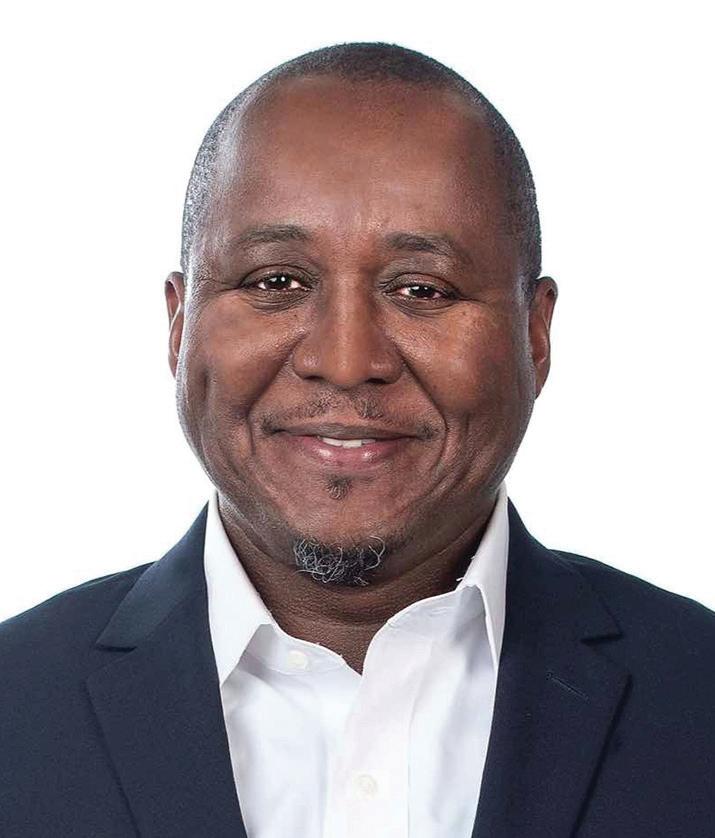



4 LACHES MAGAZINE E.D.ITORIAL
Poncé D. Clay Clay Law PLC
Jonathan B. Frank — Incumbent Frank & Frank Law
Aaron V. Burrell — Incumbent Dickinson Wright PLLC
Silvia A. Mansoor Foley, Baron, Metzger & Juip, PLLC
our membership. Even if you only know one or two candidates or align with one or two, cast your vote for just those one or two.
4. Would my vote really matter? Most definitely. I have overseen six board elections since I came to the OCBA, and in almost all of them, the difference in votes has been only a handful.
Again, on May 1, 2024, all OCBA members who are eligible to vote will receive a link via email to the online ballot to vote for the candidates of their choice for the OCBA board of directors. e ballot opens at 8 a.m. on May 1 and closes at 5 p.m. on May 9. We contract with a third-party vendor, eBallot, to proctor our election, and the online voting process is secure, easy, and quick. e ballot consists of a list of all the candidates, with a checkbox next to each candidate’s name, along with their photo and biographical information. It couldn’t be simpler.
roughout April, members will receive a series of emails providing you with information on the candidates, their qualifications, and why they want to represent you on the board of directors. After the ballot opens for voting on May 1, reminder emails will be sent to eligible members who have not yet voted. To make the emails stop, all you need to do is cast your vote!
e bar association comprises a diverse array of opinions and differing points of view. As in a democracy, the discourse is what makes us healthy, helps us reach sound decisions, and helps us make the bar association a place where everyone is welcomed and valued. Each of the candidates has worked very hard to earn your vote and to serve as your representative and your voice on the board. Please vote to help us ensure a strong board, a strong association, and a strong legal profession in Oakland County. Below is the slate of candidates running for the OCBA board. Biographies and statements from each of the candidates can be found on the OCBA website at ocba.org/ board_elections.

Jennifer Quick is the executive director of the Oakland County Bar Association.

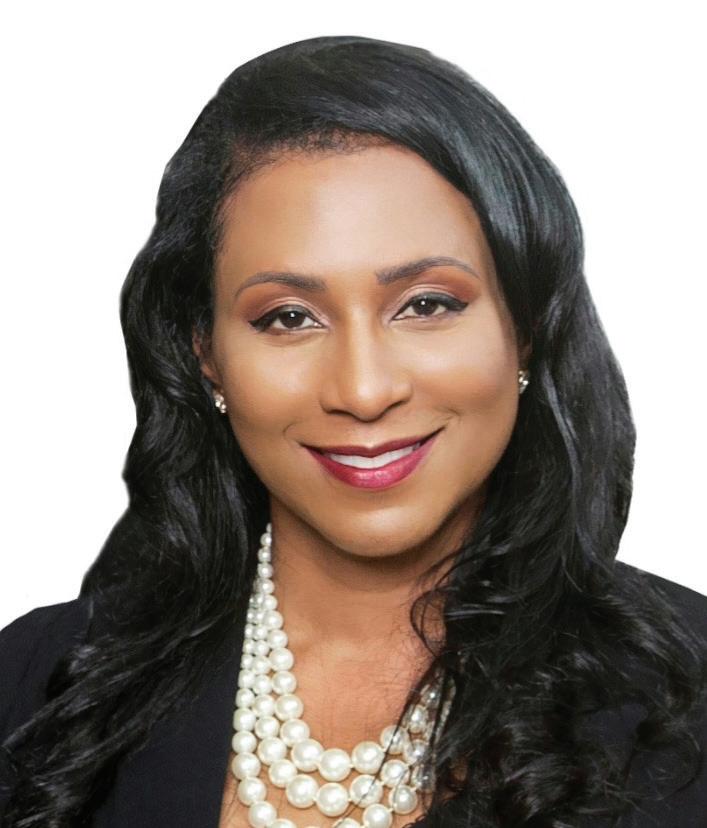












Contact Us Essex Centre - For Sale/Lease A Southfield Office Headquarters Building • 4-Story, 60,000 SF Building • 3,570- 41,403 SF Contiguous • Corporate Headquarters Opportunity • Building and Monument Signage • Covered Parking • Central Location with Easy Access to M-10, I-696 and Telegraph • Surrounded by Banks, Restaurants and Retail Todd Szymcak | 248-841-5007 szymczak@farbman.com Lesley Gutman | 248-860-6800 lgutman@farbman.com 40900 Woodward Ave., Suite 111, Bloomfield Hills, MI 48304-5116 248-553-0800 mkobliska@kobliskalaw.com | www.kobliskalaw.com Divorce Mediation In-person First Session Settlement Rate > 90% Court-Listed Domestic Relations Mediator and Qualified Arbitrator • Fellow of the American Academy of Matrimonial Lawyers • Michigan Super Lawyer from 2012 – present • Life Fellow of the Oakland County Bar Foundation • Martindale-Hubbell rated “AV Preeminent” Mathew Kobliska
Kimberley A. Ward — Incumbent
Axiom at Google LLC/The Ward Legal Justice Group, PLLC
James A. Martone Dickinson Wright PLLC
CALENDAR OF EVENTS
Please Note: Dates listed below were sent to the publisher on February 2, 2024. It is possible that some of the events listed below have since been altered. Please check ocba.org/events for the most up-to-date schedule of events.
APRIL
MEET THE JUDGES
Judges from the Oakland County District, Probate, and Circuit courts, along with judges from the Michigan Court of Appeals, Michigan Supreme Court, and U.S. Bankruptcy Court and U.S. District Court for the Eastern District of Michigan, have been invited to Red Run Golf Club for this popular annual event. In addition to networking, don’t forget to check out the items that will be up for bid at this year’s silent auction. Proceeds from the auction will benefit Oakland County Children’s Village. To learn more or to register, visit ocba.org/events
LUNCHEON LIMINE: FAMILY COURT
Our bench/bar brown-bag luncheon series continues virtually via Zoom and will feature Judges Lisa Langton and Julie McDonald from the Oakland County Circuit Court’s Family Division. They will share tips and preferred protocols for practicing in the family court. Bring your questions and join us for an informal discussion of legal topics and practice issues. Space is limited, so register today at ocba.org/events

MAY
NEW LAWYER BOOT CAMP
Join the Oakland County Bar Association and Oakland County Circuit and Probate courts for an extensive full-day boot camp covering everything a new attorney practicing in Oakland County needs to know to get a jump start on their practice. Breakfast and lunch will be provided. The boot camp is open to attorneys who have been practicing for five years or less. To learn more or to register, visit ocba.org/events.
3
OAKLAND COUNTY BAR FOUNDATION’S 25TH ANNUAL SIGNATURE EVENT




The highlight of the season for many association and foundation members, the 25th annual Signature Event will return to Orchard Lake Country Club. The excellent food, the lakeside location, and the company of colleagues will produce a great networking event that, in turn, will benefit so many recipients. Proceeds will allow the Oakland County Bar Foundation to fund programs of many worthy organizations. Only a limited number of tickets are available, so hurry and get yours today. Sponsorships showing your support of the OCBF are still available. Those interested may contact Katie Tillinger at ktillinger@ocba.org or (248) 334-3400. To learn more, visit se2024.supportocbf.org


BAR NIGHT OUT MEMBERSHIP MIXER
Join us from 5:30 to 7:30 p.m. for another great opportunity to mix and mingle with fellow bar members while enjoying appetizers and a cash bar. This event is free for OCBA members and space is limited, so register today at ocba.org/events
6 LACHES MAGAZINE
OCBA OFFICE CLOSED IN OBSERVANCE OF MEMORIAL DAY
9
18 27
11 21












THE OAKLAND COUNTY BAR FOUNDATION IS PLEASED TO INVITE YOU TO… JOIN US! REGISTER AT SE2024.SUPPORTOCBF.ORG. Join us for the OCBF’s highly anticipated fundraising extravaganza overlooking beautiful Orchard Lake. Enjoy lavish food, dri nks and the company of colleagues as we raise money to support the critical mission of the OCBF. Within the last 10 years alone, the Signature Event has raised over $2.7 million to fund legal aid and education throughout Oakland County. Without your support and the support of our sponsors, this wouldn't be possible. Orchard Lake Country Club 5000 W Shore Dr, West Bloomfield Thursday, May 9, 2024 6:00–9:00 p.m. Platinum Sponsor Laches Ad Signature Event 2024 -Laches_HPh-042024.indd 1 2/26/24 4:20 PM 248-553-2000 fabiansklar.com THE PROPERTY INSURANCE, EXPLOSION & FIRE INJURY ATTORNEYS MICHIGAN’S MOST EXPERIENCED PROPERTY INSURANCE LAW FIRM. The knowledge you need, the results you want. Untitled-1 1 1/7/21 3:57 PM
APRIL
11 Brown Bag: Child Memory Issues (11:30 a.m. – 1 p.m.)
A seminar for juvenile law appointed counsel
Presenter: Daniel H. Swerdlow-Freed, Ph.D., Swerdlow-Freed Psychology
This Zoom seminar will provide an overview of the science behind the analysis of memory and suggestibility issues in the context of children’s statements, particularly as to experiences of abuse; the best practices or standards used by experts in the field; and how expert testimony can be useful in the courtroom.
Worth 1.5 hours of juvenile training credit for appointed counsel
16 2024 MIDC Update (Noon – 1 p.m.)
A seminar for criminal defense appointed counsel
Presenter: Peter L. Menna, Esq., Oakland County Indigent Defense Services Office
This Zoom seminar will provide an overview of the Michigan Indigent Defense Commission and the public defender’s office. It will also provide updates on new developments, including Standard 6 and Standard 8. There will be a Q&A and great conversations on issues within the program.
Worth 1 hour of criminal and juvenile training credit for appointed counsel
22 New Developments in Legal Tech and Data Privacy — Answers to Questions You’ve Been Wanting to Ask and Those You Did Not Know You Should Be Asking (Noon – 1:30 p.m.)
A presentation by the New Lawyers Committee
Presenters: Daniel W. Linna, Esq., Northwestern University Pritzker School of Law; Jordan Galvin, Esq., Perkins Coie LLP; and Danielle Bass, Esq., Honigman LLP
Moderator: David Sheaffer, Esq., Michigan Supreme Court
This Zoom seminar will feature several experts in the realm of developing legal technologies, data analytics, artificial intelligence, and data privacy participating in a moderated fireside-chat-style discussion concerning recent developments, risks and opportunities for lawyers and clients, frequent questions, and questions that lawyers and clients may not know that they should be asking to better prepare them to utilize new technologies and serve their clients.
MAY

3 New Lawyers Boot Camp (8 a.m. – 5 p.m.)
A presentation for new lawyers
Presenters: Hon. Michael Warren, Hon. Victoria A. Valentine, Hon. Jeffery S. Matis, Hon. Kameshia D. Gant, Hon.
Martha D. Anderson, and Hon. Nanci J. Grant, Oakland County Circuit Court; Hon. Linda S. Hallmark, Oakland County Probate Court; and more
Location: Oakland County Circuit Court — Jury Assembly Room
Join the Oakland County Bar Association and Oakland County Circuit and Probate courts for an extensive full-day boot camp covering everything a new attorney practicing in Oakland County needs to know to get a jump start on their practice.
14 Case Evaluation and ADR — What Every Litigator Needs to Know (TBA)
A seminar by the DCCE, CCCE, and ADR committees
Presenters: Thomas L. Vitu, Esq., Advocate Mediation, LLC; Steven D. Brock, Esq., Clark Hill PLC; Hon. Cynthia M. Arvant, 46th District Court; more speakers TBA
Moderators: Christina M. Battle, Esq., Christine M. Battle, PLLC, and Karen Geibel, Esq., The Cincinnati Insurance Companies
This hybrid seminar will explore best practices for litigators who are appearing at case evaluation and/or alternative dispute resolution. The seminar will address what case evaluators are looking for in written and oral presentations. Judges’ perspectives on case evaluation and ADR will be shared as well.
21 Community Corrections (11:30 a.m. – 1 p.m.)
A seminar for criminal defense appointed counsel
Presenter: Eric Schmidt, MPA, Oakland County Government
This Zoom seminar will provide an overview of community corrections. We will also discuss pretrial services and bail issues. The mission of Oakland County Community Corrections is to reduce recidivism by providing a continuum of services that adhere to evidence-based principles. The mission of the Pretrial Services unit is to uphold pretrial justice through legal and evidence-based practices. Join us for an in-depth conversation on the opportunities they provide. A Q&A will follow the presentation. Worth 1.5 hours of criminal and juvenile training credit for appointed counsel

PROFESSIONAL DEVELOPMENT & CONTINUING LEGAL EDUCATION
8 LACHES MAGAZINE
Learn more and register at ocba.org/events
Expand Your Knowledge with These Great Seminars!










Real Estate One - Caron Koteles Riha-Laches_HPh-042024.indd 1 2/22/24 2:32 PM Barb
and
Jones Co-Advisory/Referral Fees honored. New Law Firm, Familiar Faces DECADES OF EXPERIENCE FROM BOTH SIDES OF EMPLOYMENT LITIGATION Continuing the mission of assisting individual employees and small businesses with employment-rights disputes. Consultation regarding employment-related contracts and severance agreements. E ective litigation of employment rights disputes. www.work-lawyers.com Toll Free Phone: 888.421.9704 Local: 248.865.0001 LAWYERS FOR THE WORKPLACE Accepting Referrals of Plaintiff-Side Employment Disputes Throughout the State of Michigan FARMINGTON HILLS I STERLING HEIGHTS I DOWNRIVER MORGAN &JONES Of Counsel: Dave Kotzian, Ray Carey, and Don Gasiorek
Urlaub,
Sam Morgan
Greg
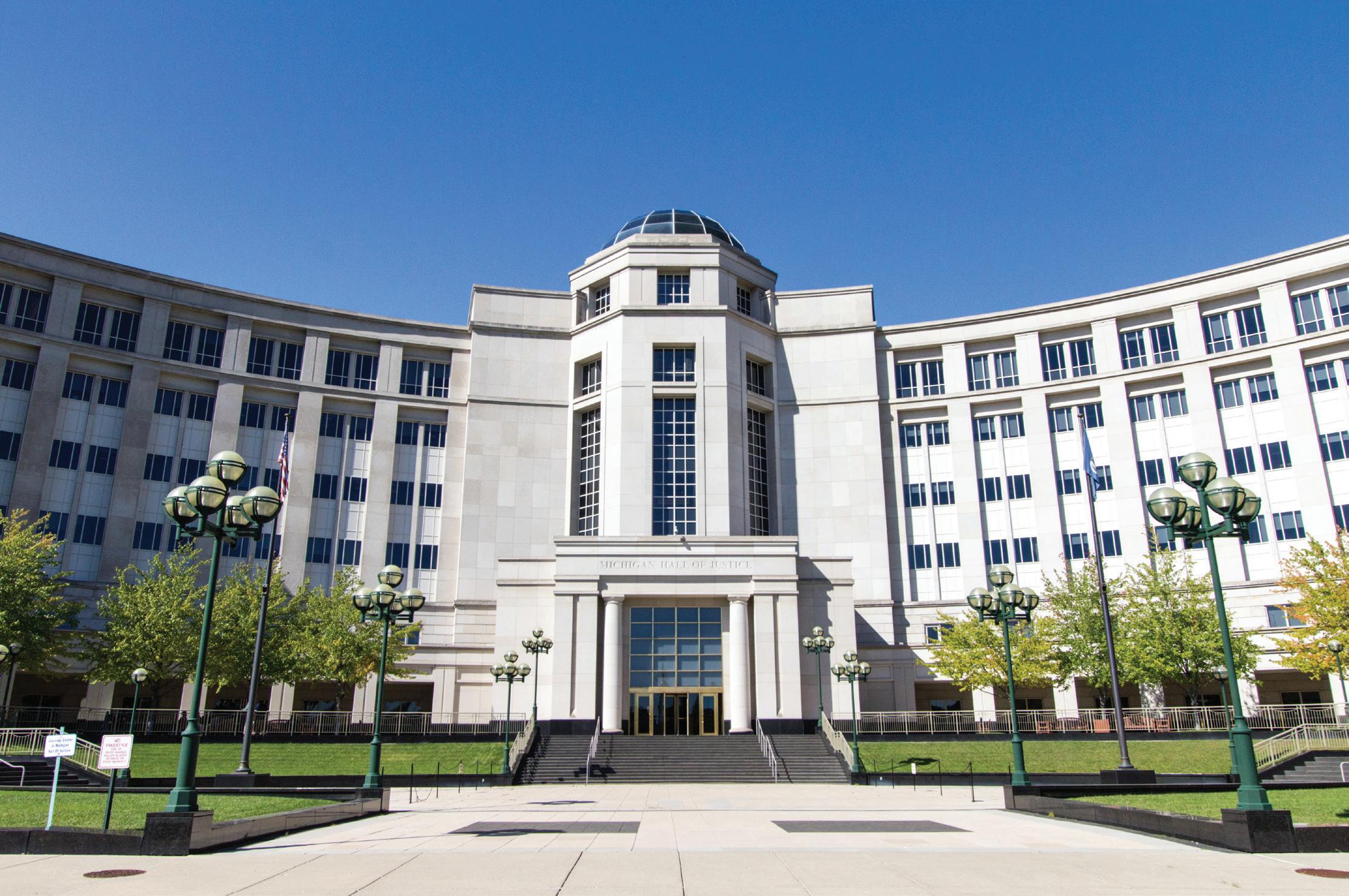
The Nuts and Bolts of Appeals in Michigan
By Stephen T. McKenney
Congratulations! You and your client prevailed in the trial court!
Bummer! You and your client lost in the trial court.
Whatever situation you find yourself in, it is likely not the end of the story. Final decisions of any trial court are appealable by right in Michigan. Other interim decisions of a trial court and posttrial decisions are appealable by leave. So, what does an appeal entail? This article delves into the “nuts and bolts” of appeals in the Michigan state courts.
FEATURE | Appeals in Michigan 10 LACHES MAGAZINE
APPEALS AS OF RIGHT AND APPEALS BY LEAVE
The first question a lawyer should ask before taking an appeal is whether it is an appeal “of right” or an appeal “by leave.”1 The answer generally turns on whether the order being appealed is a “final order.”2 Final orders are appealable as of right, meaning that the Court of Appeals must hear the appeal, if it is timely filed.3 Appeals of nonfinal orders are usually by leave granted, meaning that the Court of Appeals has discretion to hear the appeal or not.4 If the Court of Appeals decides not to grant an application for leave to appeal, then the lower court’s ruling stands.
So, what is the difference between a final order and a nonfinal order? MCR 7.202(6) has the exhaustive list, but, generally, (1) in a civil case, a final order is the first order from the trial court that disposes of all of the claims in the case; (2) in a custody case, it is any order granting or denying a motion to change custody; and (3) in a criminal case, it is the order of dismissal or the judgment of sentence. Orders awarding attorney fees and costs are also considered “final judgments” appealable as of right. Other appeals are by leave only. For example, an order granting summary disposition to one defendant, but leaving the others in the case — that’s an appeal by application. An order finding a party in contempt — that’s an appeal by application. An order denying summary disposition — that’s an appeal by application.5
What’s the difference, for the practitioner, between appeals as of right and appeals by leave? The most important practical difference is what a lawyer needs to file in the Court of Appeals to start the process. In the case of an appeal of right, the only things that have to be filed with the Court of Appeals to start the process are basic forms identifying the claim of appeal, stating that transcripts have been ordered, and identifying the underlying case information.6 The Court of Appeals provides a form document that contains a checklist to ensure that all the proper forms are filed.7 In addition to filing the claim of appeal and required forms with the Court of Appeals, a practitioner must file a copy of the claim of appeal and statement regarding transcript in the trial court as well.8 Both the Court of Appeals and trial court require fees to be paid at the time of the filing of a claim of appeal.9
In contrast, when a party files an application for leave to appeal, it must file not only the forms claiming the appeal, but also a brief on the merits that complies with MCR 7.212.10 Stated otherwise, when an appeal by right is filed, it is accomplished by filing basic forms; the brief is filed later. When an application for leave to appeal is
filed, it requires filing both (1) the forms required for an appeal of right and (2) the complete brief on the merits of the appeal itself.11 In addition, if the appeal is taken from an interlocutory order (i.e., an order before the final judgment), then the brief must also explain why the appellant would suffer harm by having to wait for a final judgment.12
Appeals of right or by application have to be filed within 21 days of the order appealed from, or within 21 days of an order denying a post-judgment motion, such as a motion for new trial, rehearing, reconsideration, or other relief from judgment.13 If an appeal of right is not timely filed, it may be pursued as an application for leave to appeal.14 An application that is not timely filed may be pursued as a delayed application for leave to appeal.15
SO, I’M IN THE COURT OF APPEALS — WHAT IS GOING ON IN THE TRIAL COURT?
When an appeal of right is taken after a final judgment, jurisdiction vests in the Court of Appeals, meaning that the trial court can no longer do anything to amend, modify, or set aside the judgment being appealed.16 If a party is appealing a final order and wants clarification of that order or wants to modify that order, they must go to the Court of Appeals — not the trial court — for relief.
While the original judgment that is the subject of appeal cannot be amended, that does not mean that the judgment cannot be executed. In
fact, after the automatic stay provided by MCR 2.614 expires, a party with a judgment can execute that judgment, regardless of whether a claim of appeal is pending.17 This means garnishments can be issued, property seized, liens recorded, and other creditors’ rights vindicated. To avoid execution while a claim of appeal is pending, the party claiming the appeal must ask for a stay pending appeal.18 The appellant must first request a stay from the trial court.19 If the trial court denies the stay, then the appellant can request a stay from the Court of Appeals.20 Stays of money judgments typically require the appellant to provide security for the stay.21 Security for a civil money judgment can come in the form of a bond, a letter of credit, or depositing money directly with the trial court.22 The amount of money needed to secure the appellee and obtain a stay on appeal is 110% of the amount of the underlying judgment, together with any interest, costs, or attorney fees assessed prior to the order staying the case.23
BRIEFS ON APPEAL
Every appeal, whether by right or application, requires the appellant to file a brief in support of the appeal. The particulars of what each brief requires are prescribed by MCR 7.212(B)-(G). For most appeals, the appellant’s brief is due 56 days after the transcript is filed.24 Thus, often, when the claim of appeal is filed, the appellant will not know when the brief is due — counsel will need to wait for the transcripts to be filed and then calculate the date from there. If more time is necessary, the parties can agree to adjourn
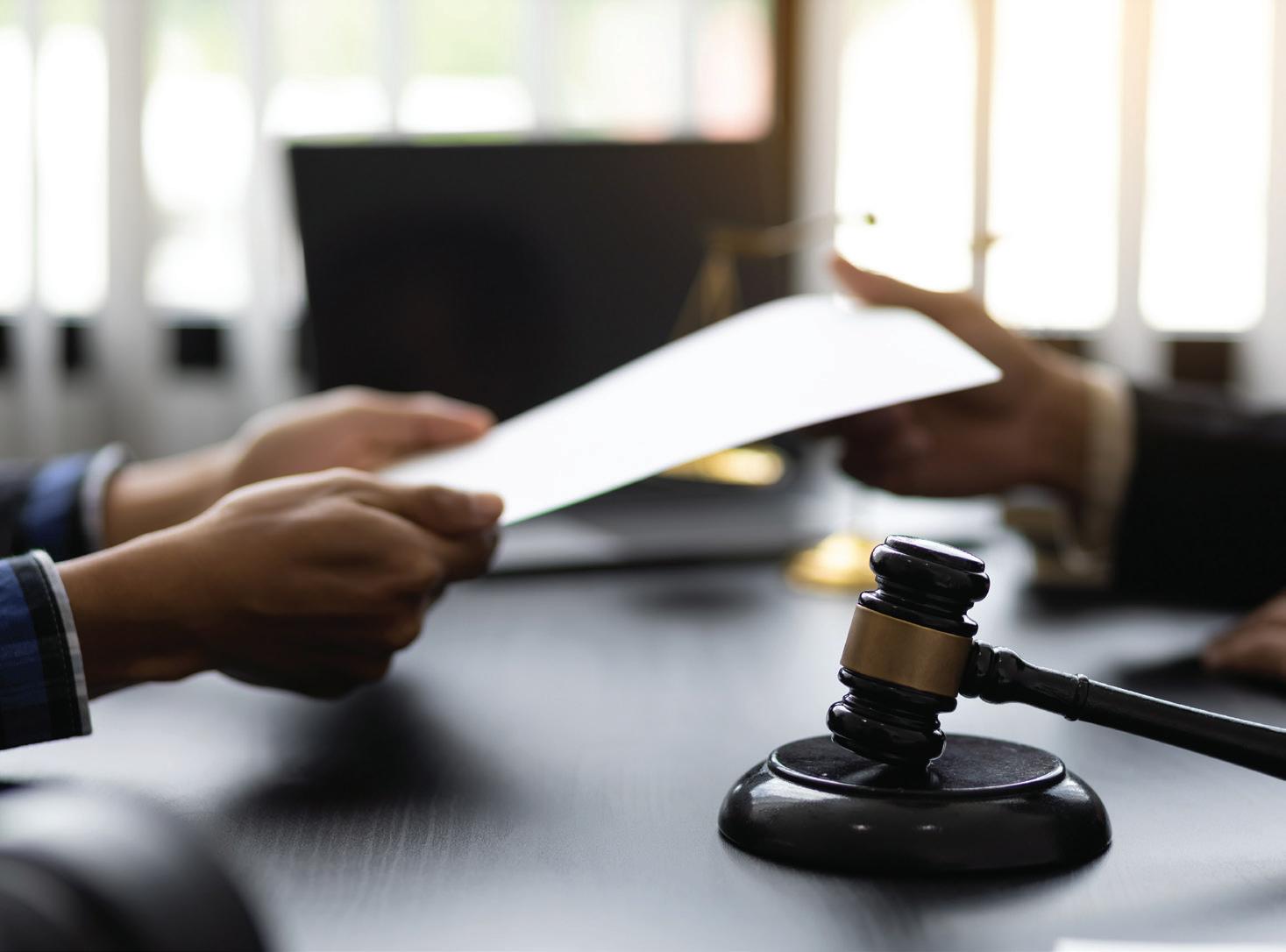
www.ocba.org 11 Appeals in Michigan | FEATURE
the deadline for filing briefs for up to 28 days by stipulation.25 Excepting unusual circumstances in which time is absolutely of the essence, counsel should ordinarily agree to an extension of the time requested by an opposing party because the opposing party can always file a motion for extension of time and such motions are ordinarily granted by the Court of Appeals.26
e court rules require briefs on appeal to contain a statement of facts — with precise citations to the record below — that explains in a clear, concise, and chronological narrative the material facts of the case (both favorable and unfavorable).27 e court rules further require arguments to be separately presented and likewise supported by citation to the record and applicable legal authorities.28
Gone are the days of page limits on briefs on appeal. ey have been replaced by word limits.29 Both the appellant and appellee have 16,000 words (not including introductory matters like the caption, table of contents, index of authorities, statement of jurisdiction, and statement of questions presented).30 Reply briefs are limited to 3,200 words.31
Aside from meeting the technical requirements of a brief, effective brief writing stands out in the clarity of its arguments. Good briefs focus on what the trial court got wrong (or right) in its order below, with specific focus on the legal reasoning of the trial court. Words spent personally attacking an opposing party, opposing counsel, or the trial court are words wasted. No appeal was ever won because one attorney wrote a scathing personal attack on another.
MOTIONS … IN THE COURT OF APPEALS?
When attorneys think of motion practice, they typically think of the trial court, but the Court of Appeals entertains (a limited number of) motions as well. MCR 7.211 describes motion practice in the Court of Appeals and lists the special motions that the court will entertain.32 Motions for ultimate relief (i.e., to affirm, for peremptory reversal, or to dismiss the appeal) must include a brief.33 A party may (but is not required to) respond to a motion in the Court of Appeals.34 e deadlines for responding vary, depending on the nature of the motion made.
Except for administrative issues, motions are submitted to a randomly assigned panel of three Court of Appeals judges for decision.35 If a motion requires a swift decision from the Court of Appeals prior to some action taking
Final
place in the trial court (for example: a trial court has ruled that an expert witness may not testify at a jury trial that starts next week, or a property is about to be auctioned), then the party seeking leave to appeal can file a motion for immediate consideration of the application or motion.36 A motion for immediate consideration must specify the date by which a decision is needed and the reason for the expedited consideration.37 Typically, when a motion for immediate consideration is filed, the clerk’s office will contact the nonmoving party to establish the timeline for a response. If no motion for immediate consideration is filed, the pending application or motion will be addressed in the ordinary course.
Motions are submitted each Tuesday.38 e default rule is that there is no oral argument on motions in the Court of Appeals.39 While the Court of Appeals can request argument on motions, such argument is exceedingly rare.
ORAL ARGUMENT
In order to preserve oral argument in the Court of Appeals, the party must make a request for oral argument on the cover page of their brief on appeal.40 If oral argument is not requested, the party waives any right to participate in oral argument at the Court of Appeals.41 Approximately five weeks prior to oral argument, the Court of Appeals will notify the attorneys, via email, of the date and time for the oral argument. is email also identifies the panel of judges who will decide the case. e notice further specifies the location (Detroit, Lansing, Grand Rapids, or Marquette) at which the argument will take place. Oral arguments are scheduled at two separate times: a 10 a.m. call and an 11 a.m. call. e cases are called in the order listed on the case call sheet.42 If an attorney is late when the case is called, and not present, the court will call the case anyway and oral argument is forfeited — be on time!
Prior to oral arguments, the panel of judges will have reviewed — at a minimum — all of the briefing, the lower court rulings and record, and a research memorandum prepared by the court’s research attorneys. e panel is very familiar with the facts of each case and the governing law. Effective oral argument needs to do something other than repeat or rehash the brief. e panel knows what you wrote. e best oral arguments directly tell the panel why your client should win the appeal. Succinctly presenting the panel with focused reasoning is the best bet the advocate has to improve on the written submissions already considered by the panel.
Of course, the prepared portion of oral argument is only half the lawyer’s work in oral argument. e lawyer presenting oral argument also needs to be prepared for any questions the panel may have about the case. Typically, questions from the panel focus on the application of the law to the facts. Does this rule of law apply here? Should it be extended, or curtailed? Do the facts align with previous cases, or are they substantially different? Do the facts fall within the reach of the statute, court rule, or evidentiary rule? Counsel needs to be familiar with not only the statutes, rules, and case law they cited in support of their positions — but also the authorities relied on by their opponents. In reviewing case law prior to oral argument, it is also a good practice to “Shepardize” the cases the lawyer relied on in their own briefing to see whether they have been modified by any recent ruling by the Court of Appeals or Supreme Court.
THE DECISION
After the oral argument, the case is submitted to the three-judge panel. e judges confer with one another and vote on the result for each case. e written opinion is finalized to comport with the panel’s decision (and concurrences or dissents may be drafted). e three-judge panel also decides whether it will publish the decision or release it as an unpublished case.43 e decision on whether to publish the case is guided by the criteria set forth in MCR 7.215. Whether published or not, the clerk of the Court of Appeals emails a copy of the decision to the attorneys of record on the appeal.
After the opinion on appeal is released, any party aggrieved by the decision may either (1) ask the Court of Appeals for reconsideration of its decision or (2) file an application for leave to appeal to the Michigan Supreme Court.44 An aggrieved party must file a motion for reconsideration within 21 days of the release of the opinion.45 A motion for reconsideration in the Court of Appeals has the same standard of decision as a motion for reconsideration in the trial court.46 Unlike procedure in the trial court, however, the party opposing a motion for reconsideration may file a brief opposing the motion (and does not have to wait for permission from the Court of Appeals to file a response).47 An application for leave to appeal to the Michigan Supreme Court must be filed within 42 days (civil cases) or 56 days (criminal cases) from the date the opinion (or the order denying a motion for reconsideration) is issued.48

Stephen McKenney is a shareholder at Altior Law, P.C., and he has over 20 years of experience writing and arguing appeals, in addition to his work as a trial attorney and litigator. He has briefed and
FEATURE | Appeals in Michigan 12 LACHES MAGAZINE
orders are appealable as of right, meaning that the Court of Appeals must hear the appeal, if it is timely filed.

argued appeals in Michigan’s circuit courts, the Michigan Court of Appeals, and the Michigan Supreme Court. He has also briefed and argued cases in the United States Court of Appeals for the Sixth Circuit. McKenney is a former law clerk to the Hon. James C. Cacheris, United States district judge for the Eastern District of Virginia. He is the chair of the OCBA’s Circuit Court Committee and a member of the OCBA Business Court and Counsel Committee. McKenney is an advisor member of the State Bar of Michigan Standing Committee on Character and Fitness. Previously, he served as a member, and later chairperson, of the State Bar of Michigan District I Committee on Character and Fitness.
Footnotes:
1. See generally MCR 7.203.
2. Id.
3. MCR 7.203(A).
4. MCR 7.203(B).
5. MCR 7.203(B)(1).
6. MCR 7.204(B)-(D).
7. MCR 7.204(C)(6).
8. MCR 7.204(E).
9. MCR 7.204(B)(2) and (E)(3).
10. MCR 7.205(B).
11. MCR 7.205(B)(1).
12. Id.
13. MCR 7.204(A)(1); MCR 7.205(A)(1).
14. MCR 7.203(B)(5).
15. MCR 7.205(A)(4).
16. MCR 7.208(A). This rule also prohibits amending, altering, or setting aside orders that are appealed by leave, after leave is granted. Id
17. MCR 7.209(A)(1).
18. Id.
19. MCR 7.209(A)(2).
20. MCR 7.209(A)(3).
21. MCR 7.209(B).
22. MCR 7.209(E)(3).
23. MCR 7.209(E)(2)(a).
24. MCR 7.212(A)(1)(a)(iii). This general rule is subject to a number of exceptions listed in MCR 7.212(A)(1)(a).
25. MCR 7.212(A)(1)(a)(iii).
26. Id
27. MCR 7.212(C)(6).
28. MCR 7.212(C)(7).
29. MCR 7.212(B)(1).
30. Id.
31. MCR 7.212(G).
32. Other grounds for motions in the Court of Appeals are listed in MCR 7.215 and 7.216.
33. MCR 7.211(A)(3).
34. MCR 7.212(B).
35. MCR 7.211(E).
36. MCR 7.211(A)(4) and (C)(6).
37. MCR 7.211(C)(6).
38. MCR 7.211(D).
39. Id.
40. MCR 7.212(C)(1).
41. MCR 7.214(A).
42. MCR 7.214(C).
43. MCR 7.215(A).
44. MCR 7.215(I); MCR 7.305.
45. MCR 7.215(I)(1).
46. Id.
47. Compare MCR 7.215(I)(2) with MCR 2.119(F)(2).
48. MCR 7.305(C)(2).

www.ocba.org 13
in
| FEATURE
Appeals
Michigan

It’s Finally Over — or Is It? An Overview of Final Orders and Why They Matter
By Kari L. Melkonian and Erin J. Rodenhouse
One of the more difficult things about appeals is knowing when you have a final order. A final order confers jurisdiction in an appellate court to hear an appeal of right. Without it, a party may only file an interlocutory appeal that proceeds on discretion of the court, which oftentimes isn’t granted. And since the timing requirements for filing are jurisdictional,1 waiting too long to file an appeal of right waives the right. When that happens, an appeal proceeds only at the mercy of either the Michigan Court of Appeals by leave or a federal district court by permission to file a late notice of appeal.2 Both courts have discretion to decide whether to grant the request. But even that’s limited. The Michigan Court of Appeals has only six months and a district court has only 30 days until the rules foreclose their jurisdiction altogether.3 To avoid that mess, it’s important to know when you have a final order.
FEATURE | Final Orders 14 LACHES MAGAZINE
Michigan’s Final-Order Rules for Civil Appeals
Michigan defines a final order, in part, as the first order that resolves all claims to all parties.4
e administrative language sometimes seen at the bottom of an order that reads “ is is a final order and closes the case”5 has no bearing on whether the order is a final order.6 Many attorneys think that the administrative language means something about an appeal. But it doesn’t.
e Michigan Court of Appeals doesn’t decide its jurisdiction based on that language.7 Rather, it looks at whether any claim to any party remains unadjudicated. If there’s still an unresolved claim to any party in the case, no appeal of right exists.8 Once a trial court enters a final order, a party has only 21 days to file a claim of appeal.9
A post-judgment order awarding attorney’s fees is a separate final order that gives a separate appeal of right.10 So a party challenging both the final order and an order on attorney’s fees must file two claims of appeal: the first within 21 days of the first order resolving all claims to all parties; the second within 21 days of the order awarding attorney’s fees. e Michigan Court of Appeals will likely consolidate the appeals.
e Federal Rules O er Some Flexibility
Under the federal rules, a judgment is an order from which an appeal lies.11 Jurisdiction is usually limited to appeals from final judgments.12 And parties must take their appeal of right within 30 days of the final judgment.13
Federal courts generally follow the rule that entry of a judgment disposing all claims constitutes a final order.14 And as with Michigan, substance, not labels, determines whether an order is final.15
Yet the federal rules, in some ways, offer a little more flexibility because a party can file an early notice of appeal and wait for it to perfect. For example, if a party gets an order granting summary judgment but the district court hasn’t yet entered the actual judgment, the party can file their notice of appeal and then wait for the district court to enter the judgment. When it does, the notice of appeal runs from the time of the judgment.16
e federal rules also allow an appeal of right from a partial judgment when there are multiple claims or multiple parties.17 But to obtain an appealable partial judgment, a party must file a 54(b) motion that asks the district court, in its discretion, to determine that there is no just reason to delay appellate review.18 e district court must then make express findings on five factors that test the interrelatedness of the claims.19
Certain Federal Post-Judgment Motions Suspend an Appeal
Under the federal rules, certain post-judgment motions that either resolve an ambiguity or modify the substance of a final judgment will suspend the finality of that judgment and thus suspend any appeal already taken from that judgment.20 A notice of appeal filed before those certain post-judgment motions will not take effect until after the district court enters an order on those motions.21 If the appealing party has already filed a notice of appeal but also wants to challenge the post-judgment order that modified the judgment, they can simply file an amended notice of appeal for no additional fee.22
On the other hand, if a party waits to file their notice of appeal until after the resolution of those certain post-judgment motions, their time for appeal runs from the date the district court enters the post-judgment order.23 e exception, however, is a post-judgment motion for attorney’s fees.
Usually a merits judgment is final despite unresolved attorney’s fees. And a motion for attorney’s fees does not extend the time to file a notice of appeal unless the district court extends the time under FRCP 58.24 If that happens, the time to appeal begins anew when the district court enters the order for attorney’s fees.25 If not, the time for appeal runs from the entry of the judgment.26
Bottom Line
Under both Michigan and federal law, a final order and its timing requirements give a party a short green light to proceed with an appeal of right. e basic rule of thumb for appellate attorneys is to appeal early and often. e worst that can happen is a reviewing court telling a party that they’ve appealed too soon.

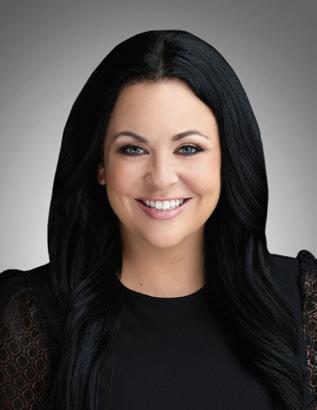
Kari L. Melkonian is a shareholder at Collins Einhorn Farrell PC, where she specializes in the defense of personal injury, wrongful death, and construction defect claims. She is an o cer of the OCBA board of directors and past chair of the Circuit Court and Criminal Law committees. Melkonian served as a judicial sta attorney to the Hon. Martha D. Anderson and was a court clerk for the Hon. Linda S. Hallmark and the Hon. Barry M. Grant (retired). She can be reached at (248) 351-5436 or kari.melkonian@ce awyers.com.
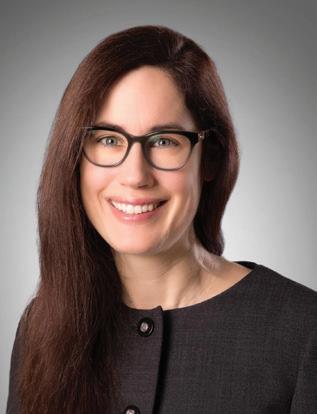
Erin J. Rodenhouse is an appellate attorney at Collins Einhorn Farrell PC. She practices civil appeals in Michigan’s appellate courts and the United States Court of Appeals for the Sixth Circuit. Rodenhouse sits on council for the State Bar of Michigan
Appellate Practice Section and is a former law clerk for the Hon. John A. Murphy (retired). She can be reached at (248) 663-7722 or erin.rodenhouse@ ce awyers.com.
Footnotes:
1. MCR 7.204(A).
2. MCR 7.203(B); FRAP 4(a)(5).
3. MCR 7.205(A)(4)(a); FRAP 4(a)(5).
4. MCR 7.202(6)(a)(i).
5. MCR 2.602(A).
6. Botsford Continuing Care Corp v Intelistaf Healthcare, Inc, 292 Mich App 51, 61 (2011) (holding that the circuit court order saying “This Judgment disposes of the last pending claims in this matter and closes the case” was not appealable as a matter of right under MCR 7.202(6)(a)(i)).
7. Id.
8. MCR 2.604(A).
9. MCR 7.204(A)(1).
10. MCR 7.202(6)(a)(iv).
11. FRCP 54(a).
12. 28 USC 1291.
13. FRAP 4(a)(1).
14. Federal Court of Appeals Manual (6th ed), § 2:1, p 40.
15. Dubicz v Commonwealth Edison Co, 350 F3d 694 (CA 7, 2004).
16. FRAP (4)(a)(2).
17. FRCP 54(b).
18. Id.
19. General Acquisition, Inc v GenCorp, Inc, 23 F3d 1022 (CA 6, 1994).
20. FRAP 4(a)(4)(B). FRAP 4(a)(4)(A) specifies six motions that suspend an appeal: a renewed motion for directed verdict under FRCP 50(b); a motion for additional findings of fact under FRCP 52(b); a motion to amend the judgment under FRCP 59; a motion for a new trial under FRCP 59(b); a motion for relief from judgment under FRCP 60; and a motion for attorney’s fees under FRCP 54, but only if the district court suspends the time to appeal under FRCP 58
21. FRAP 4(a)(4)(B). This rule applies to post-judgment motions specified in note 20.
22. Id.
23. FRAP 4(a)(4)(A). When the lower court changes matters of substance or resolves a genuine ambiguity in a judgment previously rendered, the time for appeal begins anew. Whittington v Milby, 928 F2d 188, 191 (CA 6), citing Federal Trade Commission v Minneapolis-Honeywell Regulator Co, 344 US 206, 211-212 (1952).
24. FRAP 4(a)(4)(A)(iii).
25. Id.
26. Id.; FRCP 58(e).
www.ocba.org 15 Final Orders | FEATURE
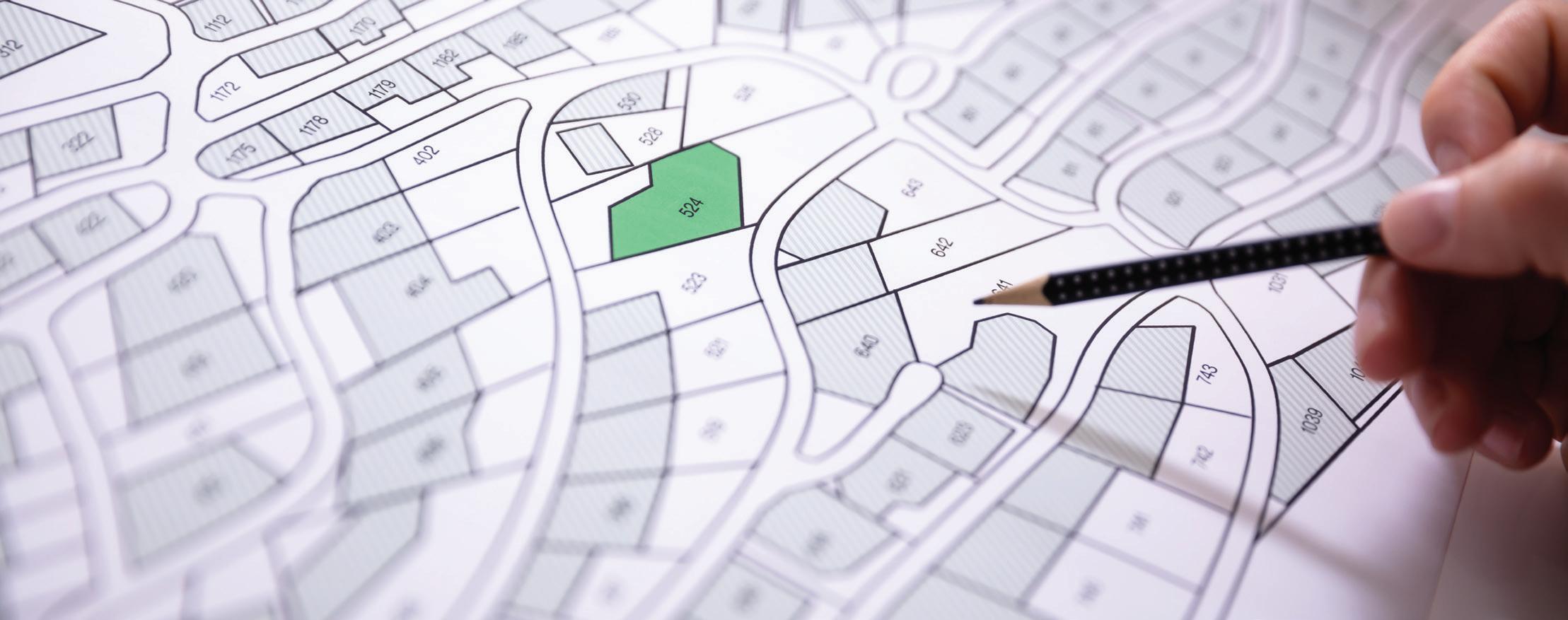
SO, YOU THINK YOU’RE SPECIAL: Evaluating Claims to ‘Aggrieved Party’ Status and ‘Standing’ in Circuit Court
Zoning Actions
By Matthew J. Zalewski
Land use disputes are frequently litigated in circuit courts, where they commonly arrive in one of three forms: original civil actions, appeals of a decision of a municipal zoning board of appeals (ZBA), and appeals of zoning decisions issued by other municipal bodies. In the case of appeals, it is not just the direct parties to a prior proceeding that may file an appeal but, in specific instances, certain third parties who may have had only a minor role in the original proceeding before a municipal board, such as by making a public comment at a ZBA hearing. Typically, zoning appellants claim that they will experience some special harm flowing from, for example, the grant of a variance by a ZBA, or a special land use by a planning commission. The type of zoning decision will impact the standard used to determine the ability of a person to challenge that decision in court. The standards for different types of zoning disputes have been the subject of numerous appellate court decisions in recent years, including a Michigan Supreme Court case that upended a decades-long understanding of what it means to be an “aggrieved party” to appeal a ZBA decision. The purpose of this article is to examine the standards that a party must satisfy to invoke the circuit court’s jurisdiction over each type of zoning matter, as well as to identify questions that remain open regarding zoning-related actions and appeals in the circuit courts.
FEATURE | Zoning Actions 16 LACHES MAGAZINE
In the case of an appeal of a ZBA decision, a third-party appellant must satisfy the Michigan Zoning Enabling Act’s requirement of being a “party aggrieved by the decision.”1 On the other hand, original actions and appeals from zoning decisions by other municipal authorities are governed by the rules related to “standing.”
For decades, the courts interpreted the “aggrieved party” standard that was applied to appeals of all zoning decisions as requiring an appellant to “allege and prove that he [or she] has suffered some special damages not common to other property owners similarly situated,” as was reaffirmed in the 2018 case Olsen v. Chikaming Township 2 This standard was not to be confused with the generally applicable standard for prudential standing to initiate an original civil action, which requires the party to show that there is a legal cause of action or, alternatively, to establish “a special injury or right, or substantial interest, that will be detrimentally affected in a manner different from the citizenry at large.”3 The key differences between the two standards are that an appeal is not a “legal cause of action,” and an appellant must show injury not from the underlying facts of a case, but rather from the lower tribunal’s decision itself.4
It was another distinction that caught the Michigan Supreme Court’s attention. In the 2022 case Saugatuck Dunes Coastal Alliance v. Saugatuck Township,5 the Supreme Court questioned whether the standard in Olsen imposed a property ownership requirement for “aggrieved party” status and whether it was proper to evaluate special damages in relation to “property owners similarly situated.” In Saugatuck Dunes, the Court of Appeals had declined to find that the appellant coastal alliance had achieved “aggrieved party” status to challenge a ZBA decision under MCL 125.3604 and MCL 125.3606, in part, because it was not a property owner.6 The Supreme Court observed that, while the Michigan Zoning Enabling Act references property ownership, for example, with respect to who is entitled to notice of a zoning-related public hearing, it does not reference property ownership or occupancy status with respect to “aggrieved party” status. Therefore, the Supreme Court reversed Olsen to the limited extent that it stood for the proposition that “aggrieved party” status is determined with reference to property ownership status and a comparison to similarly situated “property owners.”7
But, the Supreme Court declined the appellant’s invitation to merely transpose the Lansing Schools standing test for original actions to the “aggrieved party” standard for ZBA appeals. Instead, it constructed a multipart test for “aggrieved party” status under MCL 125.3604 and
MCL 125.3606 that requires the following elements to be satisfied to appeal a ZBA decision:
1) The appellant must have participated in the challenged proceedings by taking a position on the contested decision, such as through a letter or public comment;
2) The appellant must claim some legally protected interest or protected personal, pecuniary, or property right that is likely to be affected by the challenged decision; and
3) The appellant must provide some evidence of special damages arising from the challenged decision in the form of an actual or likely injury to or burden on their asserted interest or right that is different in kind or more significant in degree than the effects on others in the local community.8
Under this standard, the fact that a neighbor’s claimed injury is comparable to other neighbors’ (that is, an injury shared with similarly situated property owners) is not enough to defeat a claim to “aggrieved party” status. Rather, the question is whether the appellant claims an injury different from that of those in the community who might experience “incidental inconvenience.” However, the Supreme Court clarified that certain claims that Olsen recognized as historically inadequate to achieve “aggrieved party” status are still not enough, standing alone, including: mere adjacency to a subject property; entitlement to notice of a public hearing on a zoning matter; and generalized concerns about aesthetics, economic harms, noise, or traffic.9 Claims of such harms must be backed by a
showing that they will cause a “disproportionate burden” on the appellant.10 Therefore, while Saugatuck Dunes reformulated the “aggrieved party” standard for ZBA appeals, substantial elements of the historical understanding of an “aggrieved party” remain intact.
In a fleeting paragraph following the announcement of its new “aggrieved party” formula, the Supreme Court dropped another potentially significant observation, albeit without directly overruling a related finding in Olsen In Olsen, the Court of Appeals appellees (who were the circuit court appellants in the zoning ordinance appeal) argued that the township should have challenged their “aggrieved party” status when they appeared at the ZBA rather than waiting to do so in the circuit court. The Olsen court rejected this argument, finding that any question of the appellants’ ability to challenge the decision beyond the ZBA was premature until the ZBA actually made a decision and, therefore, was properly raised for the first time in the circuit court.11 Saugatuck Dunes did not disturb the general proposition that it is not for the ZBA to determine one’s standing for a circuit court appeal. However, the Supreme Court did hold that if the administrative record is inadequate to determine a party’s “aggrieved party” status, then the circuit court must order further proceedings on the “aggrieved party” issue, which could include remand to the ZBA to further develop the record consistent with instructions from the circuit court.12 Thus, while remand in zoning appeals is not unusual to develop the administrative record regarding the merits of the ZBA’s decision, Saugatuck Dunes appears to open the door for assigning a more

www.ocba.org 17 Zoning Actions | FEATURE
Saugatuck Dunes State Park
active role to the ZBA in developing the evidentiary record regarding a given party’s “aggrieved party” status in the circuit court even though it lacks the power to decide the issue.
Saugatuck Dunes did not actually apply its new standard to the case, nor did it opine on the adequacy of a ZBA record to determine “aggrieved party” status. Instead, the Supreme Court remanded the matter to the circuit court for further proceedings under the revised “aggrieved party” standard, without reference to property ownership. Since then, the appellate courts have not issued any notable cases engaging the elements of the Saugatuck Dunes standard or the adequacy of a municipality’s record for determining whether a party is “aggrieved.” Moreover, as Saugatuck Dunes specifically articulated its standard relative to appeals from ZBA decisions under MCL 125.3604 and MCL 125.3605, it is not clear whether the Saugatuck Dunes standard would apply to appeals of zoning-related decisions from a planning commission or legislative body, or in other land use matters. us, the precise extent of Saugatuck Dunes’ application remains ripe for further litigation.
However, the Court of Appeals issued two notable published opinions in 2023 limiting the application of Saugatuck Dunes to timely filed zoning appeals. First, in Zelasko v. Charter Township of Bloom eld,13 a group of plaintiffs invoked Saugatuck Dunes in an attempt to obtain standing for original mandamus and constitutional claims challenging a township board’s denial of a special land use and site plan application, where the plaintiffs had not filed a timely appeal to the circuit court. Observing that the plaintiffs’ request for relief effectively sought reversal of the special land use decision, the Court of Appeals held that the original claims were an improper collateral attack on the special land use decision and therefore the court lacked subject matter jurisdiction.14 In so doing, the court distinguished Saugatuck Dunes as applicable only to timely filed ZBA appeals, not original claims that stem from a township board zoning decision and that seek the relief that could have been pursued in a circuit court appeal.15
e Court of Appeals has also declined to extend Saugatuck Dunes to original claims for nuisance abatement. In Sakorafos v. Charter Township of Lyon,16 the Court of Appeals addressed whether a circuit court correctly dismissed a nuisance claim brought by a private party, where the plaintiff failed to show “special damages” under the “aggrieved party” test based on the fact that many township residents objected to the effects of the dog kennel that was the subject of the action.17 e Court of Appeals rejected the notion that the Saugatuck
Dunes analysis should apply to actions in which a private citizen brings an original action for nuisance abatement against another private property owner. It reasoned that “an adjoining landowner is likely to be determined to be affected by the nuisance created by a zoning violation in a manner distinct from the general public.”18 Sakorafos highlights a key distinction between “standing” and “aggrieved party” status, as even though the Supreme Court preserved the notion that adjacency of an appellant to the subject of a ZBA appeal is not enough to invoke “aggrieved party” status in ZBA appeals, the Sakorafos court determined that adjacency “lends support to the finding that plaintiffs have demonstrated special damages different from injury suffered by others in the community generally” for purposes of the prudential standing standard to initiate an original zoning-related lawsuit.19
ough these appellate decisions suggest that the Saugatuck Dunes test has a narrow application to only timely filed ZBA appeals, the Supreme Court has cited Saugatuck Dunes in the context of a non-ZBA appeal, which might also provide some insight into how it would apply the reformulated “aggrieved party” standard in other zoning appeals. In Tuscola Area Airport Authority v. Michigan Aeronautics Commission,20 the Supreme Court cited Saugatuck Dunes in support of a peremptory order finding that an airport authority challenging the Michigan Aeronautics Commission’s grant of permits to a wind turbine operator under the Tall Structures Act, MCL 259.481 et seq., had sufficiently pleaded and proved “aggrieved party” status for a circuit court appeal of the commission’s decision, where the airport authority asserted that the turbines would result in a pecuniary loss to the airport. is generated a dissent from Justice David Viviano, who would have granted leave to appeal to consider whether the “aggrieved party” standard in Saugatuck Dunes, and specifically the “pecuniary interest” element, should apply outside of the zoning context. While Tuscola does not resolve these issues, it is illustrative of the questions that remain open post-Saugatuck Dunes
Ultimately, Saugatuck Dunes “overturn[ed] the previous long-standing meaning of ‘party aggrieved’” for purposes of a circuit court zoning decision.21 In so doing, the Supreme Court has at least theoretically enlarged the universe of prospective appellants of ZBA decisions, while also potentially enlarging the scope of fact-finding required by a ZBA in relation to members of the public who voice their opinions on zoning matters. Nearly two years after the Saugatuck Dunes opinion, open questions remain as to exactly what claims of “special damages” will satisfy the Supreme
Court’s new formula and whether the Saugatuck Dunes analysis might influence the evaluation of an appellant’s ability to pursue circuit court appeals challenging zoning decisions made by bodies other than a ZBA, or even appeals unrelated to zoning. Until the precedent evolves, these questions will likely continue to be litigated. As they are, municipal practitioners should be vigilant about discarding long-standing assumptions about who is “aggrieved,” avoiding conflating “aggrieved party” status with “standing,” developing strong records at the local level, and framing arguments about “aggrieved party” status with careful attention to the extensive discussion in Saugatuck Dunes about the factors that may or may not signal that a party is “aggrieved.”


Matthew J. Zalewski is a shareholder with Rosati Schultz Joppich & Amtsbuechler, PC. He practices in the area of municipal law, with a specialty in land use, zoning, and First Amendment litigation. He is a ve-year member of the OCBA and a member of the State Bar of Michigan Government Law Section. He can be contacted at mzalewski@rsjalaw.com or (248) 489-4100.
Footnotes:
1. MCL 125.3605.
2. Olsen v Chikaming Township, 325 Mich App 170, 185 (2018).
3. Lansing Sch Ed Ass’n v Lansing Bd of Ed, 487 Mich 349, 372 (2010).
4. Olsen at 193; Federated Ins Co v Oakland County Road Comm’n, 475 Mich 286, 291-292 (2006).
5. Saugatuck Dunes Coastal Alliance v Saugatuck Township, 509 Mich 561, 576 (2022).
6. Id. at 575.
7. Id. at 587-591.
8. Id. at 595.
9. Id. at 596-597.
10. Id. at 597.
11. Olsen at 191-192.
12. Saugatuck Dunes at 598.
13. Zelasko v Charter Twp of Bloomfield, __ Mich App __, 2023 WL 3665863 at *9 (2023).
14. Id. at *8.
15. Id. at *9.
16. Sakorafos v Charter Twp of Lyon, __ Mich App __, 2023 WL 8101316 (2023).
17. Id. at *5.
18. Id.
19. At the time of this article, an application for leave to appeal has been filed in this case to the Michigan Supreme Court.
20. Tuscola Area Airport Authority v Michigan Aeronautics Commission, 511 Mich 1024 (2023).
21. Zelasko at *9.
FEATURE | Zoning Actions 18 LACHES MAGAZINE








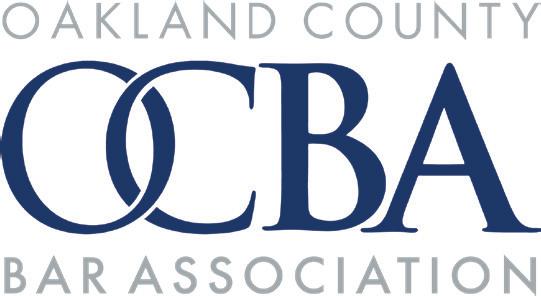






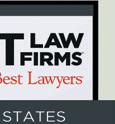



is proud to support the Varnum LLC-Laches_QPv-042024.indd 1 2/23/24 1:24 PM Insurance Coverage Firm KUTINSKY.COM (248)712-1049
Varnum


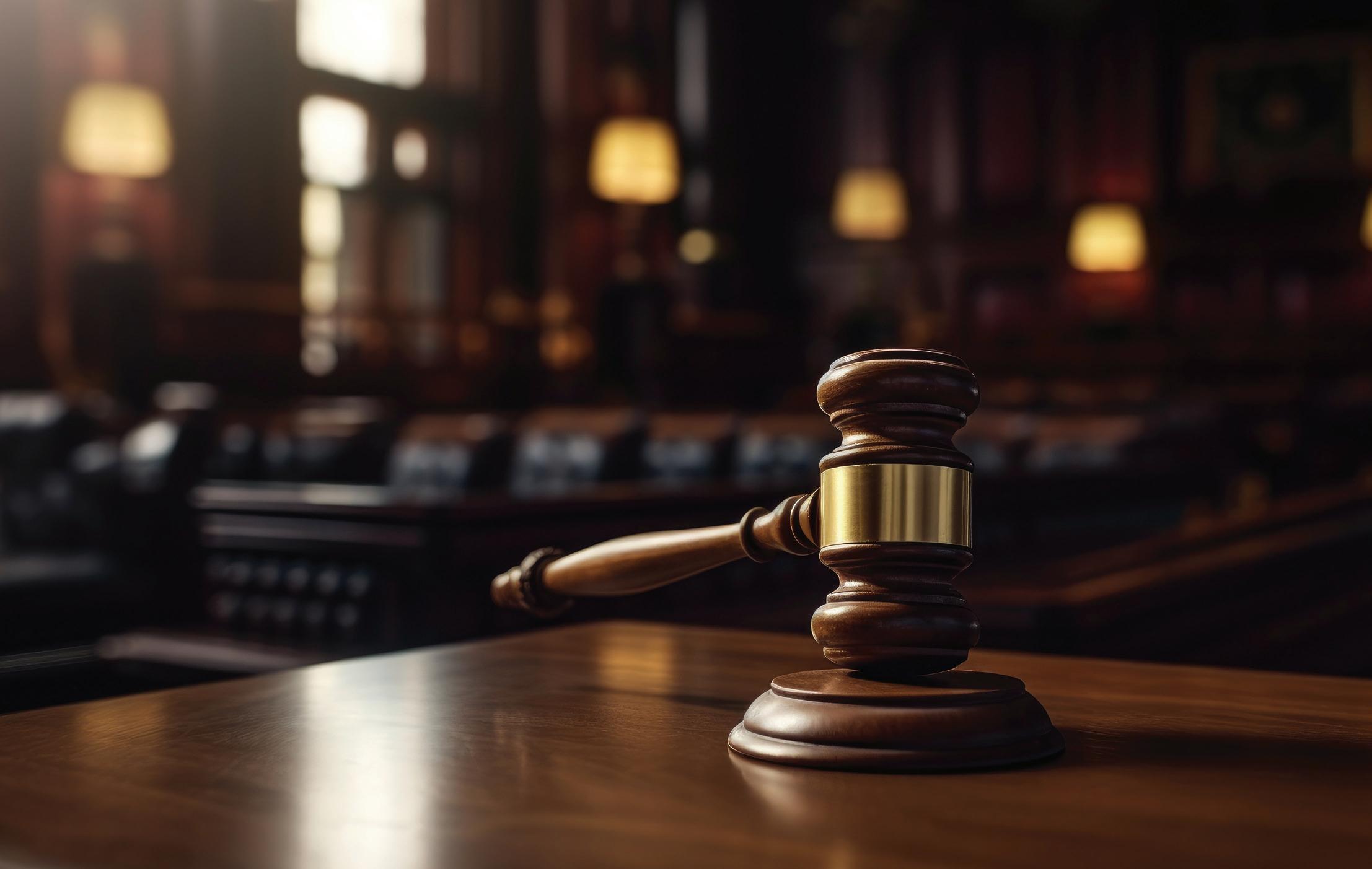
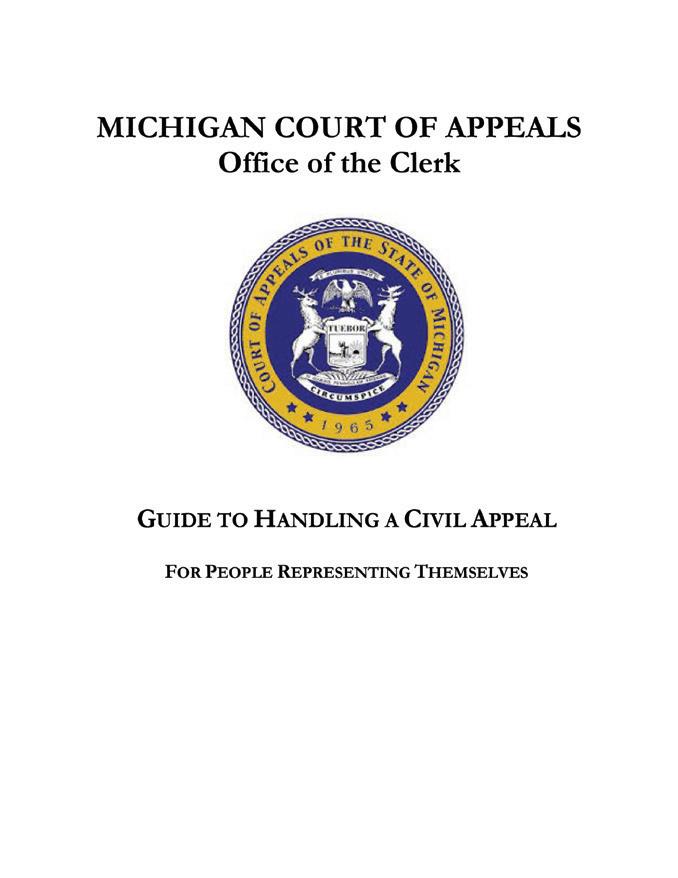



CIRCUIT COURT CIVIL APPEALS:
A Brief Primer on Practice and Procedure
By Daniel J. McCarthy
This article provides a brief overview of the general rules and procedures regarding district or municipal court appeals to circuit court under MCR 7.101 through MCR 7.115. is article is not meant to cover the many nuances of the rules and their subparts, and it also does not address criminal or administrative appeals. Appellate practice is a niche practice area, and it requires a di erent mindset from what is required to litigate a case in the trial court. As I have observed, the trial court is concerned with discerning the facts of a case, whereas the appellate court is concerned with the law and whether the trial court reached the correct decision. Before we go on to cover the rules regarding timing, ling, appeal bonds, brie ng, and decisions, one must seriously consider whether pursuing an appeal from an unfavorable district court ruling is worthwhile.
FEATURE | Civil Appeals 20 LACHES MAGAZINE
SHOULD I APPEAL?
It should come as no surprise that most civil appeals are affirmed in the appellate courts. For example, the Michigan Court of Appeals reports in its Guide to Handling a Civil Appeal (see Guide to Handling a Civil Appeal, p 7, courts.michigan. gov/494772/siteassets/publications/manuals/coa/ guide-to-handling-a-civil-appeal.pdf (accessed January 15, 2024)) more than 50% of appeals filed in the Michigan Court of Appeals are “dismissed for procedural defects” and “more than 90% of applications for leave to appeal are denied.” While the guide was written for those pursuing an appeal without a lawyer, the odds of winning a reversal in the circuit court are not great.
With that backdrop, the fees and costs involved in pursuing an appeal to the circuit court could easily exceed half the $25,000.00 jurisdictional limit of the district court.1 Sometimes, the costs in pursuing an appeal to the circuit court could easily exceed the amount of the judgment. In one case, my client retained me to pursue a circuit court appeal when the district court judgment was roughly only $3,000.00. I explained that the legal fees would exceed the amount of the judgment. The client didn’t care; it wasn’t about the money — it was about the perceived injustice of the district court ruling. With that said, sometimes it makes sense to pursue an appeal to the circuit court. If, for example, a case presents a novel issue of law worthy of review by the Court of Appeals or even the Supreme Court, a trip to the circuit court is a necessary first step. Other times, if the district court denies necessary injunctive relief, an appeal to the circuit court is necessary.
WHEN AND WHAT TO FILE?
FOLLOW THE 21-DAY RULE.
The rules regarding filing either an appeal as of right or an application for leave to appeal to the circuit court are similar, if not identical. Both follow the general 21-day time limit format as further explained. While most of us conceptually understand the difference between an appeal as of right and an appeal by leave, I’ve often explained to clients that an appeal by right is akin to “opening the door, entering and joining the party, and explaining why you’re the best guest to arrive.” On the other hand, an appeal by leave is akin to “knocking on the door and hoping that the door will be opened.”
(i) Appeal of Right
Under MCR 7.104(A), an appeal of right must be filed either within 21 days after entry of the district court’s final order or judgment (see MCR 7.104(A)(1)) or within 21 days after the
district or municipal court enters an order on a timely filed reconsideration or other motion that challenges the entry of the final judgment or order. See MCR 7.104(A)(2). Under MCR 7.102(8), the definition of a district or municipal court’s “final order” is the same as provided under MCR 7.202(6).2
Filing an appeal of right is mercifully relatively easy. See MCR 7.104(B). In general, you file:
• a one-page document claiming an appeal with a caption, adding the party designations as “appellant” or “appellee”;
• a copy of the order on appeal;
• either a certificate from the court reporter stating that the transcript was ordered or a statement that “nothing is to be transcribed”;
• the district court docket entries;
• the $150.00 appeal fee;3 and
• a proof of service that the claim of appeal was served on the parties and the district court. See MCR 7.104(C) and (D)(1) through (9); MCR 7.104(E).
Your opponent has 14 days to file an appearance in the circuit court or waives notice of further circuit court appellate proceedings. See MCR 7.104(F).
(ii) Appeal by Leave
Any other district court order that does not suffice as a “final” order or judgment may only be appealed by leave. See MCR 7.103(B). The timing rules for filing are the same — 21 days after entry of the order (see MCR 7.105(A)(1)) or 21 days after the district court rules on a timely filed reconsideration or other motion that challenges the order. See MCR 7.105(A)(2).
Unfortunately, unlike when filing an appeal of right, a lot of work must be expended in pursuing an application for leave to appeal, primarily because you are required to file an appellate brief as the application. Under MCR 7.105(B), in addition to creating the caption and stating “the date and nature of the judgment, order, or decision appealed,” MCR 7.105(B)(1)(b), (c), and (d) require a “concise” list of the issues; a “concise” argument in support of each issue “that conforms with MCR 7.212(C)”; and, if the order is interlocutory, an explanation of why the appellant “would suffer substantial harm by awaiting final judgment before taking an appeal [as of right.]” See MCR 7.105(B). The rules, unfortunately, do not provide any guidance as to what constitutes a “concise” allegation of error or a “concise” argument that conforms with the briefing requirement under MCR 7.212(C). But
more on briefing below.
Consistent with the court’s love affair with the 21-day rule, your opponent has guess what? You got it — 21 days to file an answer to the application for leave to appeal. See MCR 7.105(C). The court rules allow for a reply, but it’s limited to seven days following receipt of the answer. See MCR 7.212(D).
(iii) Late Appeals
What happens if you miss the 21-day filing period? Don’t despair and don’t call your malpractice carrier, at least not yet. If you miss the 21-day deadline for an appeal by leave, MCR 7.105(G) generally provides for a six-month grace period. Under this rule, you may file a late application for leave to appeal but you must include “a statement of facts explaining the delay.” See MCR 7.105(G). While your opponent has a chance to answer the delayed request, the answer “may challenge the claimed reasons for the delay.” See MCR 7.105(G)(1).
As with the Michigan Court of Appeals, there is no oral argument on an application for leave to appeal, or even a late application, “unless directed by the court.” See MCR 7.105(E)(1).4 Generally, the trial court has 35 days to decide the application (see MCR 7.104(E)(2)) and will either grant or deny it. If granted, the appeal proceeds as if it were a claim of appeal of right and the appellant is required to file the additional materials — i.e., docket entries, proofs of service, etc. — as required under MCR 7.104(D) and (E) within seven days after entry of the order granting leave to appeal. See MCR 7.105(E)(4) (b). If the trial court grants leave to appeal, your opponent may pursue a cross-appeal but must file the claim of cross-appeal within 14 days after entry of the order granting leave to appeal. See MCR 7.104(E)(4)(c).
APPEAL BONDS AND STAY OF EXECUTION/PROCEEDINGS PENDING APPEAL
In general, the procedures for obtaining a stay in the district court are similar to those for obtaining stays in the circuit court when pursuing an appeal to the Michigan Court of Appeals. MCR 7.108 governs a stay pending appeal in the district court. As with the Michigan Court of Appeals, you must first seek a stay of proceedings in the district court before seeking a stay in the circuit court. See MCR 7.108(A)(1).
In the district court, an appeal bond must be at least 125% of the judgment or order on appeal (see MCR 7.108(B)(2)(a)), as opposed to 110%, which is required for circuit court stays. See, e.g., MCR 7.209(E)(2)(a).
Like the circuit court, the district court has
www.ocba.org 21 Civil Appeals | FEATURE
broad discretion to grant a stay with or without a bond, including whether to accept a letter of credit.5 See MCR 7.108(B)(2)(b) (“the trial court [may grant] a stay with or without bond”). See also North Pointe Ins Co v Steward, 265 Mich App 603, 611-612; 697 NW2d 173 (2005) (recognizing the trial court’s authority to condition stay on forms of security other than surety bond, such as letter of credit); Lewis v Grand Rapids Plastics, Inc, 1996 Mich App LEXIS 2242, unpublished decision of the Court of Appeals issued December 10, 1996 (No. 162962) (same).
Once the district court accepts the surety and amount, whether by bond, letter of credit, or otherwise, a stay of proceedings is mandatory. See MCR 7.108(B)(2)(a). Even if a client is delayed in obtaining an appeal bond or other surety, execution on the judgment is automatically stopped upon the posting of a bond. See MCR 7.108(B)(4)(c).
CIRCUIT COURT BRIEFING AND THE DISTRICT COURT RECORD
(i) The District Court Record
At this point, you have filed your claim of appeal or the circuit court has granted your application for leave to appeal. Now what? Well, it’s a waiting game. If you ordered the transcripts, you have to wait for the court reporter to prepare and file them in the district court. See MCR 7.109(B)(3)(b)(i). Next, you have to wait for the district court to furnish the entire record, including the transcripts, to the circuit court. See MCR 7.109(G). Under this rule, the district court has 14 days following receipt of the transcripts to furnish the entire record to the circuit court. See MCR 7.109(G)(1).
(ii) Briefing: When Is the Brief Due?
One of the most-asked questions in appellate practice: “When is my appellate brief due?” For a circuit court appeal, the appellant’s brief is due “within 28 days after the circuit court provides written notice … that the record on appeal is filed with the circuit court.” MCR 7.111(A) (1). In other words, even after the district court sends the record to the circuit court, you have to wait to receive the circuit court’s notice of receipt of the record before the 28-day time period begins to run.
Can you get an extension? Yes, but the rules provide for a pretty tight leash — only 14 days. Id. Unlike with briefing extensions in the Court of Appeals (which could provide, sometimes, up to 128 days or even more time to file a brief), the circuit court can extend the briefing time by 14 days by stipulation, or more time by motion. Indeed, the circuit court is much less forgiving than the Court of Appeals; if you miss the filing
date for your brief, the circuit court can consider the appeal as “abandoned” and may dismiss the appeal upon 14 days’ notice to the parties. MCR 7.111(A)(1)(b). But as in the Court of Appeals, if you file a late brief, you forfeit the right to oral argument. See MCR 7.111(A)(6).
Your opponent, the appellee, has 21 days to respond and may also receive an additional 14 days to respond. MCR 7.111(A)(2). Following receipt of the appellee’s brief, the rules provide for 14 days to file a reply brief. MCR 7.111(A)(3).
While the briefing rules under MCR 7.111 do not provide for discretion regarding brief timing, most judges in the circuit courts like to issue their own briefing schedule.
THE CIRCUIT COURT APPELLATE BRIEF
Notwithstanding the abbreviated timing rules above, the circuit court appeal brief “must comply” with the briefing rules for the Court of Appeals. See MCR 7.111(B). This is where some circuit courts have experienced confusion in issuing appellate briefing schedules, complete with page-length limitations, etc. An appellate brief to the circuit court is not the same as a gardenvariety summary disposition motion and brief. Contrary to MCR 2.119(A)(2)(a), which limits a trial court motion and brief to “20 pages double spaced, exclusive of attachments and exhibits,” the circuit court appellate brief is not limited to a number of pages, but rather limited by word count. Since the circuit court appellate briefing rules default to the rules governing briefing in the Court of Appeals (see MCR 7.111(B)), the circuit court appellate brief is limited to 16,000 words. See MCR 7.111(B); MCR 7.212(B)(1). An appellant’s reply brief is limited to 3,200 words. See MCR 7.111(B); MCR 7.212(G).
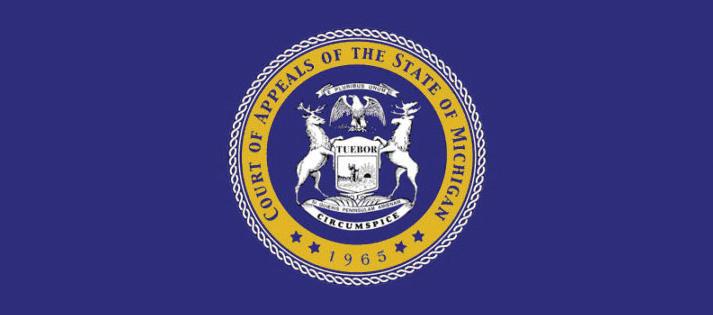
While multiple articles and guides have been published regarding the content and quality of an appellate brief, it’s worth repeating that the most important part of a circuit court appellate brief is the standard of review, save for preserving oral argument.6 MCR 7.212(C)(7) provides that every argument presented in a brief must first contain “a statement of the applicable standard or standards of review and supporting authorities.” The standard of review is what guides the circuit court in its analysis to determine whether
the district court committed an error. We’re all aware of the multiple standards of review — e.g., de novo, clear error, abuse of discretion, etc. It is critical in the appellate brief to cite the correct standard of review and to hone your argument accordingly.
A typical trial court motion and brief, on the other hand, are not constrained by such requirements — even a motion for summary disposition. Unlike an appellate brief, a trial court motion and brief are not required to cite an appellate standard of review, even within the body of a summary disposition brief. Under MCR 2.116(G)(1), a summary disposition motion is governed by MCR 2.119. Under MCR 2.119(A)(2), a motion that “presents an issue of law must be accompanied by a brief citing the authority on which it is based” and otherwise comply with MCR 7.215(C) if citing an unpublished opinion. Other than those requirements, nothing in either MCR 2.116 or MCR 2.119 requires a summary disposition brief to contain a “standard of review.” To reiterate, a trial court motion and brief are limited to 20 pages combined (see MCR 2.119(A)(2)(a)), and it makes no sense whatsoever to take up valuable page space with boilerplate paragraphs explaining, for example, how a trial court must construe a motion under MCR 2.116(C)(8) or (10). Surely every trial court understands the express provisions of MCR 2.116, and taking up valuable page space to explain how the rules operate is about as useful as listening to the flight attendant explain how to buckle a seatbelt.
ORAL ARGUMENT AND DECISION
Once your briefs and appendix are filed, you wait for oral argument. Hopefully, the circuit court will schedule oral argument at a date and time that is not reserved for the weekly motion call. Much time and money have been expended in pursuing an appeal to the circuit court, and too much is at stake for the appeal to be rushed through the weekly cattle call of discovery and other motions and the like.
While you need to know your judge, oral argument should not be used to regurgitate your brief. The judge has reviewed the briefs and also had the additional input of the research attorney to provide further assistance. In most cases, a draft opinion is prepared in advance of argument. So why is oral argument even necessary? Because this is your chance to bring the case alive and to focus on the one or two strongest of your arguments as to why you should win. This is the time not only to focus on the main legal issue, but also to explain why visceral justice and equity are on your side. More often than not, however, oral argument is used to answer the judge’s questions regarding the case and the proceedings in the
FEATURE | Civil Appeals 22 LACHES MAGAZINE
district court. Again, much has been written on this topic as well, and it exceeds the scope of this article. Of course, the circuit court could dispense with oral argument, even if preserved, if the court “concludes that the briefs and record adequately present the facts and legal arguments, and the court’s deliberation would not be significantly aided by oral argument.” MCR 7.114(A). e court must decide the appeal “by oral or written opinion and issue an order.” MCR 7.114(B).
WHAT IF YOU WIN?
Congratulations! You won the appeal. Now what? Hopefully, your opponent won’t seek and obtain further appellate relief in the Court of Appeals. Short of that, you can tax your costs of the appeal under MCR 7.115. In general, you can tax the briefs at $1.00 per page, the filing fees, the costs of obtaining an appeal bond, the costs of the transcripts, and other costs allowed by law. See MCR 7.115(F).
If you lost, well, your only hope is to seek leave to appeal to the higher court and hope that it “opens the door.” at is, of course, if your client wants to pay for it all.


Daniel J. McCarthy is a shareholder, appellate lawyer, and co-chair of the appellate practice department with Butzel Long, P.C. Having clerked in the Michigan Supreme Court and served as a prehearing attorney in the Michigan Court of Appeals, as well as a judicial intern in the United States Court of Appeals for the Sixth Circuit, he has authored numerous appellate and trial court briefs over the course of his career and has argued many appeals in the appellate courts. When he is not drafting briefs, McCarthy can be seen and heard as the pianist/keyboard player in Captured Detroit, Detroit’s premier Journey tribute band, and Katmandu, Detroit’s premier Bob Seger tribute band.
Footnotes:
1. Under MCL 600.8301(1), the jurisdictional limit of the district court over money damage claims is $25,000.00.
2. MCR 7.102(8) provides that a “final order” or “final judgment” is defined in MCR 7.202(6). MCR 7.202(6)
in a civil case generally defines a “final order” or “final judgment” as “the first judgment or order that disposes of all the claims and adjudicates the rights and liabilities of all the parties, including such an order entered after reversal of an earlier final judgment or order.”
3. The $150.00 appeal fee is set by statute. See MCL 600.2529(1)(b) (“[b]efore filing a claim of appeal or motion for leave to appeal from the district court, probate court, a municipal court, or an administrative tribunal or agency, the appellant or moving party shall pay a fee of $150.00”).
4. In my experience, I have never seen a trial court entertain oral argument on an application for leave to appeal, much less a late application. Indeed, trial courts are increasingly dispensing with oral argument on motions for summary disposition as is their prerogative under MCR 2.119(E)(3), rendering the written brief even more critical.
5. An irrevocable letter of credit is easier to liquidate and cheaper, thereby reducing the taxable costs of the appellant. See, e.g., North Pointe Ins Co v Steward, 265 Mich App 603, 607; 697 NW2d 173 (2005).
6. As with a brief filed in the Court of Appeals, a party must preserve oral argument in the circuit court appellate brief by “writing ‘ORAL ARGUMENT REQUESTED’ in capital letters or boldface type on the title page of the brief.” MCR 7.111(C).

www.ocba.org 23 Civil Appeals | FEATURE
LEADERS in PREMISES cases! Millions in referral fees paid in accordance with the Michigan Rules of Professional Conduct 2023 -$680,000.00 verdict on an injury on a defective slide causing a TBI with a $500.00 pre-trial offer. 2022 - $1.9 M settlement on a trip and fall on a defective carpet in an apartment complex causing partial paralysis. 248-744-5000 | tjslawfirm.com 2023 - $1.35 M settlement on a trip and fall on a 1/2 inch sidewalk elevation causing a spinal cord contusion










Dear New Lawyer, congratulations! You’ve accomplished a tremendous feat in your admission to the state bar and your local bar association. You’ve navigated admissions, law school courses, and bar exam preparation, and ultimately you have secured your place among Michigan’s distinguished legal community. As if that was not enough, you are now confronted with your newest, and perhaps greatest, challenge yet: practicing as a new lawyer.
Law school can be a tremendous learning experience and, for many, our first foray into legal research, writing, and analysis. But law school can only prepare you for so much, and often, the ins and outs of day-to-day practice cannot be covered in a classroom. Law school might teach you how to think like a lawyer, but it does not necessarily teach you how to practice like a lawyer. Many are left to learn quickly in real time. is “trial by fire” experience can often burn more qualified lawyers than it propels.
If you were like me, you may have left your swearing-in ceremony with more questions than answers. My own path to practice was a winding road of changes and, at times, uncertainty about what being a practicing attorney really meant. From entering law school with a singular mindset of becoming an entertainment attorney, swearing I would never practice in criminal law, my younger self would be astonished to know that eventually, my winding path would lead me to open my own practice as a criminal defense attorney.
So, what is a new lawyer to do to avoid the pitfalls and burnout and to otherwise amass the tools to develop a strong, successful legal career? I hope to share with you the resources and opportunities I have been so fortunate to come across that have allowed me to both practice the law and enjoy my career.
e first key to establishing yourself for a successful career is something you already possess: your perspective. Many new lawyers confront the dreaded “imposter syndrome” or
LICENSE FOR LAW: Practical Advice for the New Lawyer
By Robert M. Goldman
some form of self-doubt as they handle their first motion hearing or deposition. I am here to tell you that you are not alone. e pressure to be perfect, to be experienced or an expert in a subject matter, may feel like it comes with the territory of being a lawyer. is perspective is dangerous and too common among young lawyers. Changing your perspective to understand that the career path forward is a marathon, not a sprint, is essential. Take your time to ensure you prepare and educate yourself, and your performance in the courtroom or boardroom will come into form.
Not only will a healthy perspective allow you to prepare most effectively for your clients, but it also may save you in the long run. By
its nature, this is a profession of solving other people’s problems. Your perspective can protect you from subsuming others’ stress into yourself. Recognizing what you can control, and, equally important, what you cannot, may help you maintain your own health and well-being as you progress further into your career. For tools to improve lawyer well-being, look to the Michigan Task Force on Well-Being in the Law, a 28-member task force formed in May 2022 to provide an understanding of and recommendations to combat the rise of mental health issues and unhealthy substance use among those in the legal profession. e OCBA also has a newly established Lawyer Well-Being Committee that can be a helpful

NEW LAWYERS 24 LACHES MAGAZINE
tool with current members in the surrounding area.1
With a healthy perspective serving as a strong foundation for success, new lawyers should be encouraged to take full advantage of professional associations and networking groups. Ultimately, this is a profession that will require the individual to constantly educate and update themselves on the state of the law and its ever-constant changes. Investing your time and resources into productive tools to continue your education and seeking mentorship from seasoned practitioners are key to staying up to date.
e Oakland County Bar Association, State Bar of Michigan, and other groups frequently provide events, seminars, and publications that can be utilized. For example, the Oakland County Bar Association regularly holds its Luncheon Limine question-and-answer sessions where practitioners have the opportunity to hear from and speak to different judges in an intimate setting. e direct information, and opportunities to interact with judges you may appear before, can be a significant benefit to your education and expanding your network.
Becoming an active member in your legal community has tremendous perks for practice. Joining a committee or affinity bar group can open many doors for the new lawyer by connecting them with similarly situated colleagues or vastly more experienced mentors. Learning from those who have come before us, as well as those alongside with differing backgrounds and experiences, can be as fundamentally educational as any classroom. Committees like the OCBA’s New Lawyers Committee regularly host social meetings designed to connect lawyers who have been practicing for less than 10 years, in addition to providing programs, seminars, and resources connected with the broader organization. My personal experience has benefited tremendously from actively engaging with the New Lawyers Committee, as I’ve found a cohort of new lawyers who share their personal trials and tribulations, successes, and advice. e degree of camaraderie and professional development would benefit any new lawyer advancing in their respective field.
As new lawyers, I encourage you to develop the comfort to ask questions, to be outgoing and connect with others. Despite the pressure so many can grow used to from the experiences of law school, an attorney practicing law in reality should embrace and utilize the professional community. It is possible to simultaneously personally succeed, assist each other as the next generation of lawyers, and take care of our own health and well-being with the tools and resources before us.

Robert Goldman is the founding attorney at the Law O ces of Robert Goldman, PLLC, a boutique law rm in Birmingham, Michigan. Goldman’s practice focuses on areas of law including criminal defense, driver’s license restoration, and expungements. Prior to founding the Law O ces of Robert Goldman, PLLC, he focused on municipal law, serving as a township prosecutor and concentrating on areas of ordinance enforcement and local government operations, before devoting his work to defense.
Footnote:
1. Michigan Task Force on Well-Being in the Law, August 2023, courts.michigan. gov/4a46c9/siteassets/committees,-boards-special-initiatves/lawyer-wellbeing/wbtf-final-report-.pdf




S


HEA LTH CA RE
LA W FI RM
Wachler & Associates represents healthcare providers, suppliers, and other entities and individuals in Michigan and nationwide in all areas of health law including, but not limited to:
•Healthcare Corporate and Transactional Matters, including Contracts, Corporate For mation, Mergers, Sales/Acquisitions, and Joint Ventures
•Healthcare Corporate and Transactional Matters, including Contracts, Corporate For mation, Mergers, Sales/Acquisitions, and Joint Ventures
•Medicare, Medicaid, and Other Third-Party Payor Audits and Claim Denials
•Medicare, Medicaid, and Other Third-Party Payor Audits and Claim Denials
•Licensure, Staff Privilege, and Credentialing Matters
•Provider Contracts
•Licensure, Staff Privilege, and Credentialing Matters
•Billing and Reimbursement Issues
•Provider Contracts
•Billing and Reimbursement Issues
•Stark Law, Anti-Kickback Statute (AKS), and Fraud & Abuse Law Compliance
•Physician and Physician Group Issues
•Stark Law, Anti-Kickback Statute (AKS), and Fraud & Abuse Law Compliance
• Regulatory Compliance
•Physician and Physician Group Issues
•Corporate Practice of Medicine Issues
• Regulatory Compliance
•Provider Participation/Ter mination Matters
•Corporate Practice of Medicine Issues
•Provider Participation/Ter mination Matters
• Healthcare Litigation
• Healthcare Investigations
• Healthcare Litigation
•Civil and Criminal Healthcare Fraud
• Healthcare Investigations
•Civil and Criminal Healthcare Fraud
•Medicare and Medicaid Suspensions, Revocations, and Exclusions
•Medicare and Medicaid Suspensions, Revocations, and Exclusions
•HIPAA, HITECH, 42 CFR Part 2, and Other Privacy Law Compliance
NEW LAWYERS www.ocba.org 25
S ER VING H EALTHCA RE PR OV ID ERS FOR OVE R 30 Y EARS
S ER VING H EALTHCA RE PR OV ID ERS FOR OVE R 30 Y EARS
•HIPAA, HITECH, 42 CFR Part 2, and Other Privacy Law Compliance ER VING H EALTHCA RE PR OV ID ERS FOR OVE R 30 Y EARS WachlerAssoc_OCBA_HalfPgV_ND20.indd 1 11/11/20 3:11 PM




















In previous articles, I have touched upon the court’s “next normal.” While this reality remains a work in progress, I will touch upon some of the tools the Sixth Circuit offers users to work with the court.
As a preliminary matter, when I refer to the court, I recognize the tremendous role the county clerk’s office plays in facilitating the court operations. Under Lisa Brown’s leadership, the Legal Records Division does an amazing job maintaining the circuit court’s records1 to help the court perform its duties.
Access to an open court is accepted as a given in our society. However, historically, an open court operated within the parameters of those individuals who could reach the courthouse during regular business hours.
e concept of an open court narrows further when one considers whether a court was in session. Whether a file was available in either the clerk’s office or the courtroom. Whether all the documents recorded on the register of actions (ROA) were filed in the court file.
e “openness” of the court also required that one be present in the courtroom for an event or that the event be transcribed by a court reporter at great cost or the results memorialized into a written order. In short, the public records and open courts, while available to the public, often fell behind the cloak of “practical obscurity.”2
e Sixth Circuit has worked diligently over the years to provide greater access by drawing back the curtain of practical obscurity.3 is began with access to the ROA and the digitization of documents. Eventually, users could order documents for most case types through this tool. e court also became an early adopter of e-filing technology, beginning with the Michigan Supreme Court’s voluntary e-filing pilot before moving first to the Wiznet tool that evolved into the Tyler program and now the Supreme Court’s MiFile tool. e Sixth Circuit used telephone technology obtained from the Supreme Court
Accessing the Court
By Richard Lynch
to facilitate telephone conferences in chambers and on the bench for what became known as Judge On-Line. Over time, the court expanded the program to include videoconferencing. ese steps allowed the court to adroitly pivot in March 2020 to continue court operations throughout the pandemic.
As we continue to establish our “next normal,” the value of technology continues to open doors throughout the courthouse. Few among us rue the ability to e-file documents or pine for the days of racing up Telegraph to the courthouse to make the filing deadline on a case. Since few case types do not currently participate in e-filing in the Sixth Circuit, this technology speeds the delivery of documents to counsel and the court. It also enables them to reach the file more quickly. Equally important, the self-represented litigants also continue to have the ability to access the court and file documents through the evolving e-filing system.
Turning back to the Court Explorer tool, this technology enables the public to enjoy far greater access to court files than it ever enjoyed under traditional paper filings. Court Explorer enables the public to order documents for nearly all case types in a far more efficient manner without requiring users to go to the courthouse and wade through paper court files. e expanded use of videoconferencing technology during the pandemic not only allowed courts to continue operating, but redefined the use of videoconferencing, which the Supreme Court had authorized in 2015 in MCR 2.407. Indeed, following the review by the Michigan Supreme Court’s Lessons Learned Committee, the Supreme Court implemented MCR 2.408 and amended MCR 6.006 in 2022. e availability of Zoom hearings for many types of court events not only saves time for counsel and stakeholders, but opens the virtual courthouse doors to the bar and the public, who can watch proceedings remotely rather than trudging to the court-
house and competing for a seat within the courtroom.
e court recognized that attorneys often have both in-person and Zoom proceedings on their calendars. With this in mind, the court purchased a number of Zoom pods that have been placed throughout the courthouse.
e pods offer users a quiet space in which to participate in Zoom conferences while in the courthouse for another proceeding. e pods, which come as single or double units, reduce the background noise and distractions we have encountered over the past four years.

In the photo below, Chris Bujak (left) and Pam Monville are seated in a double Zoom pod. While I appreciate the return of people to the courthouse and enjoy seeing colleagues in the hallway, the use of technology continues to expand the opportunities for the bar and public to access the court. I celebrate this opportunity, as knowledge of and access to the legal system can only lead to a better understanding of and trust in the legal system. If the “next normal” leads to greater trust in the legal system, I believe it will benefit all of us.

Richard Lynch is the court administrator for the Oakland County Circuit Court.
Footnotes:
1. Const 1963, art VI, § 14; MCL 600.571; MCL 600.1007.
2. David S. Ardia, Privacy and Court Records: Online Access and the Loss of Practical Obscurity, 2017 U Ill L Rev 1385, 1387-1388.
3. As I write this, a prominent jury trial is streaming in the background. I understand that media outlets, including CNN India, are carrying the same feed broadcasting the case across the globe.
ON THE CIRCUIT 26 LACHES MAGAZINE
Brennan Matthews
2022-281915-FC People v. Kozlin
Gabrielle Meyer
Mary Chartier, Amy
Ronayne Krause
2019-178391-NH
Kristi Felix v. Patricia Goymerac
Grant Rowe
Barry Gates
Jennifer Wright Greenman
2020-185375-NO
Brent Grant v. Auto Owners Ins. Co.
Cunningham Rowe
Matthews Valentine
Cohen Matthews Warren
Cohen McMillen Warren
2023-284644-FH
People v. Spiegel
2023-284983-FH People v. Hardwick
2023-285067-FH
People v. Benn
2021-279137-FH People v. Sessions
2022-279990-FH People v. Crumbley
2021-190867-NH
David Rundell v. Todd Frush
2023-286362-FC
People v. Hollimon
2017-162435-CZ
Saleem Chaudhary v. JDS Pump n Go
2022-193903-CB
VisitingAlexander
2019-176198-NH
Taylor Fenner v. Kiran Balchandani
2022-193587-CB
Jerry Dagenais v. ACA Track
2022-194563-CB
Kris Krstovski v. Jerome Masakowski
Jonathan Marko
Jeffrey Bullard
Rosston Ramsey
Christopher Quinn
Sydney Sexton
Michael Steinberg
Zachary Houchin
Tameka Tucker
Robert Hayes
Amy Hopp
Marc Keast
Shannon Smith
Ronald Weiner
Amy Schlotterer
Dillon
Thomas Noonan
Michael Weaver
Daniel Sharkey
Ryan Perry
Michael Ratton
Marisa Cicotte
Mark Pierce
Patrick Rode
Norman Ankers
Daniel Weberman
JANUARY 2024 DATE STARTED JURY DAYS JUDGE CASE NUMBER CASE NAME ATTORNEYS TYPE OF CASE DISPOSITION 1/18/2024 1/8/2024 1/22/2024 1/16/2024 1/16/2024 1/9/2024 1/23/2024 1/8/2024 1/30/2024 1/29/2024 1/29/2024 1/4/2024 1/18/2024 1/29/2024 1/9/2024
HHI
Tech v.
Form
Republic Steel
3 Cts. CSC 1st Degree (Relation), CSC 3rd Degree False Pretenses $1,000$20,000, Criminal Enterprise - Conduct Medical Malpractice Fail to Return Rental Property - $20,000+ General Civil Medical Malpractice 4 Counts Involuntary Manslaughter Business Personal Injury Medical Malpractice Business CCW, Felon Poss. Firearm, Weapons FF2nd Offense, Poss. C/S U/25 g, DWLS Business Guilty as Charged Verdict for Plaintiff $170,992.75 CSC 4th Degree CSC 1st Degree (Relation), CSC 1st Degree Mistrial Guilty as Charged No Cause Case Dismissed No Cause No Cause D Verdict for Plaintiff $2,481,882.53 V V V G Guilty as Charged 4 4 4 0.5 2.5 5.5 7 4 2 1.5 2 1 2.5 1 3 JURY TRIALS & UTILIZATION www.ocba.org 27
Salge Arnold Weiner
OCBA committees and programs help our members stay informed on significant developments in their areas of practice, suggest and help shape improvements to the legal profession, and serve the public. Below are just a few examples of our OCBA committees at work. Consider joining any OCBA committee for the networking and educational opportunities. Best of all, joining a committee is a free benefit of OCBA membership.
BUSINESS COURT AND COUNSEL COMMITTEE
Chair: Harvey Weingarden
Vice Chair: Derek Howard
On January 4, Michigan Supreme Court Justice Brian K. Zahra joined about 15 committee members at the OCBA and another 17 via Zoom to share the selection process for business court judges. In addition to Justice Zahra’s remarks, attendees enjoyed a lively discussion followed by networking with Justice Zahra and fellow committee members.

EMPLOYEE BENEFITS COMMITTEE
Chair: Gary Remer
Vice Chair: Nicholas Nahat

Roberta Granadier of Dickinson Wright presented on plaintiff litigation regarding 401(k) plans to the Employee Benefits Committee on January 8. She shared information about new lawsuits centered on whether a common way of handling forfeited 401(k) money could violate federal law.
To learn more about or to join any one of the OCBA’s 30 committees, visit ocba.org/ committees.
MUNICIPAL LAW COMMITTEE
Chair: Melissa Schwartz
Vice Chair: Debani Gordon Lehman
On January 24, Kali M.L. Henderson of Seward Henderson discussed the Freedom of Information Act at the Municipal Law Committee meeting. Henderson shared the implications of wrongfully denying access to citizens who then can file suit to compel disclosure. The awarding of damages and reasonable attorney fees was also discussed.

PROBATE, ESTATE AND TRUST COMMITTEE
Chair: Elisabeth Dery
Vice Chair: Julie McCowan
On January 29, Brian R. Jenney of Kemp Klein Law Firm presented on the subject “Changes to the POA Statute and How One Should Update Estate Planning Documents.” Covering a very current topic, the presentation raised a lot of questions and sparked a robust discussion.


28 LACHES MAGAZINE
COMMITTEES AT WORK






Kemp Klein Law Firm is pleased to announce that Amanda Afton Martin has joined the firm as a shareholder, where she will be actively involved in the estate planning, real estate, probate and trust administration, business planning, and tax planning practice groups. Martin serves families and businesses by developing wealth management strategies for clients to effectively manage and preserve their assets. This includes designing comprehensive estate plans, establishing business and charitable entities, and providing tax planning. She brings a distinctive combination of experience and education in taxation, estate planning and administration, and business law, offering valuable representation and guidance to clients at Kemp Klein.
Martin is a contributor to the Institute of Continuing Legal Education and is honored to be a Fellow of the Oakland County Bar Foundation. She graduated from the Michigan State University College of Law and furthered her legal education at Wayne State University, where she earned a Master of Laws degree in taxation. She also holds a Bachelor of Business Administration in economics from Eastern Michigan University.

The Mike Morse Law Firm, Michigan’s largest personal injury law firm, is pleased to announce that attorney Mike Morse and his team have won a 2024 Golden Gavel Award for best 30-second TV ad. This is the fifth time in five years the firm has received this coveted distinction, honoring the Mike Morse team for its unique, creative, and high-quality video productions.
The Golden Gavel Awards, which recognize exceptional marketing work in the legal industry, were held on January 19 in Miami. The firm was also a finalist for best public relations ad, best client testimonial, and best 60-second TV ad.
The commercial, produced by Michiganbased Lerner Advertising and titled “What Matters,” spotlights what matters most to people who have been injured in the state of Michigan, from whom they choose to represent them and whom they employ to whether they know the local courts and can win the case.


Plunkett Cooney has announced that Marc P. Jerabek has been elected to serve on the firm’s board of directors during its recent annual meeting. A member of the firm’s Diversity, Equity & Inclusion Committee, Jerabek is the first Hispanic member of the firm’s board. He focuses his practice on the representation of financial institutions, mortgage servicers, large and small businesses, and individuals, helping them navigate legal issues and achieve the best result when facing litigation. A member of the Bloomfield Hills office, Jerabek also has extensive experience in financial services litigation, commercial loan workouts, defense of consumer claims (including RESPA, TILA, FDCPA, FCRA, and student loan disputes), and real estate litigation (landlord-tenant disputes, quiet title actions, and boundary disputes, among others).
RESOLUTE
IN PRO PER www.ocba.org 29 www.ocba.org 29 Business Litigators | Business Lawyers altiorlaw.com | 248.594.5252 Our Partners | Kenneth Neuman, Jennifer Grieco, Stephen McKenney, Matthew Smith, and David Mollicone
Altior Law-Laches_HPh-042024.indd 1 2/22/24 2:07 PM









This column will appear in the April edition of LACHES, which means the first quarter of 2024 is behind us and you are no doubt fully invested in another year of hard, demanding work. Given that I know many of you on a personal or professional level, I am confident these observations are accurate: You are once again working at an extraordinary pace, and client and professional obligations sit at the top of your priorities. Good for you. Professionally. But what about the quiet moment of reflection you had over the holidays when you promised yourself (or more importantly, your family) that 2024 would be different?
Most of us identify goals each year, and according to a 2022 YouGov poll, 37% of Americans set formal resolutions. Some of the most common resolutions are to establish a healthy work-life balance (59%), improve fitness (48%), or improve mental health (36%). (forbes. com/health/mind/new-years-resolutions-statistics). Did you make any of those commitments for this year? Did you set other goals or promise yourself that you would not fall into the category of professionals discussed in e Washington Post’s January 2023 opinion piece “Want to Be Happy? en Don’t Be a Lawyer.”? (washingtonpost.com/ opinions/2023/01/20/jobs-happiness-lawyersnature).
If so, then I’d like to check in on you. I care about your well-being. It is only through strong individual members that we are able to create and sustain a strong foundation. And it is only through a strong foundation that we are able to develop a long-term platform to help those in need in our community. So, please set down your work obligations for a minute and remind yourself about how this year is going to be different. I promise your workload will be there when you turn back to it after reading these comments.
Eighty-seven percent of us identify as very or somewhat likely to keep our yearly resolutions. Sadly, by this time each year, about 53% of us have faltered, and only 1% keep their resolutions for a 12-month period. For any of you anticipat-
Do You Remember Your Resolutions?
By Mike Turco
ing a lecture or self-help advice from me, know that I am a one-percenter, but not in a good way. Less than 1% of us also slip on a resolution within the first 30 days. (forbes.com/health/mind/ new-years-resolutions-statistics).
Let’s pause and remember the promises we made to ourselves. We made resolutions with good intentions. We set goals to achieve them and, in doing so, realize a sense of pride and accomplishment and get an ever-important boost of natural dopamine. So, whether you are rock-steady in your pursuit of a new fitness routine or plan to restart your regimen tomorrow, we are in this together. I look forward to hearing about your dive trips, ski trips, family outings, or quiet breakfast with an old friend.
I also look forward to working with you to help others. As noted, one of the most common resolutions is to improve mental health. Jordyn Imhoff explores the link between charitable acts and human psyche in her article “ e Science of Kindness.” (University of Michigan, College of Literature, Science, and the Arts, November 10, 2022, lsa.umich.edu/lsa/news-events/all-news/
search-news/the-science-of-kindness.html). She credits University of Michigan professor Stephanie Preston with this pertinent observation: “Humans have evolved into caregiving mammals who help others in need, and their brains release oxytocin and dopamine — neurohormones associated with creating social bonds that signal a sense of reward, enjoyment, and benefit.”
We joined this foundation to help others, and in doing so, we help ourselves. So, while your aspiration of running a marathon or picking up a new hobby is yours to pursue alone, your commitment to helping others is a resolution for us to share. I look forward to all of us pulling together to become the good kind of one-percenter by sticking to our commitment to help those in need. ank you for leaning into that important resolution with me.

Mike Turco, the president of the Oakland County Bar Foundation, is a business litigator with Brooks Wilkins Sharkey & Turco PLLC, a Fellow in the American College of Trial Lawyers, and the proud dad of three daughters with his wife, Monique.



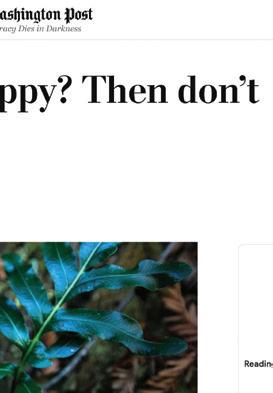




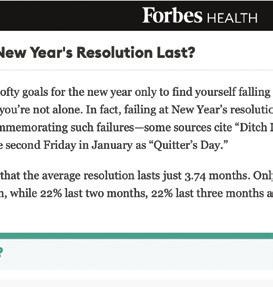


















30 LACHES MAGAZINE FOUNDATION

ASSOCIATION STAFF
Executive Director
Jennifer Quick (jquick@ocba.org)
Deputy Director of Membership and Foundation
Katie Tillinger (ktillinger@ocba.org)
Finance Director
Susan Maczko (smaczko@ocba.org)
Professional Development Director
Shanay Cuthrell (scuthrell@ocba.org)
Marketing Communications Specialist
MB Cairns (mcairns@ocba.org)
District Court Case Evaluation Administrator
Kari Ross (kross@ocba.org)
Bookkeeper
Mayly McRae (mmcrae@ocba.org)
Public Services Administrator
Janise Thies (jthies@ocba.org)
Membership Coordinator
Cathy Oaten (coaten@ocba.org)
Receptionist
Deborah Keegstra (dkeegstra@ocba.org)
Administrative Assistant
Lori Dec (ldec@ocba.org)
Unless otherwise indicated, please call (248) 334-3400 for assistance.
Address Changes
Billing
Board of Directors
Case Evaluator Applications
Committees
District Court Case Evaluation
Event Photos
Finance
Inns of Court
Mayly McRae
Susan Maczko
Jennifer Quick
Kari Ross
Katie Tillinger
Kari Ross
MB Cairns
Susan Maczko
Shanay Cuthrell
Judicial Candidate Fora................................................
LACHES Magazine ...................................................
Lawyer Referral Service – (248) 338-2100
Member Illness & Death Notification
Membership
New Lawyer Admissions
News Releases
Oakland County Bar Foundation
OCBA Policies
Pro Bono Mentor Match Program
Professional Development/CLE
Room Rental Reservations
Speakers Bureau
Volunteer Opportunities
Website
Janise Thies
Jennifer Quick
Janise Thies
Katie Tillinger
Katie Tillinger
Katie Tillinger
MB Cairns
Katie Tillinger
Jennifer Quick
Janise Thies
Shanay Cuthrell
Deborah Keegstra
Janise Thies
Janise Thies
Jennifer Quick
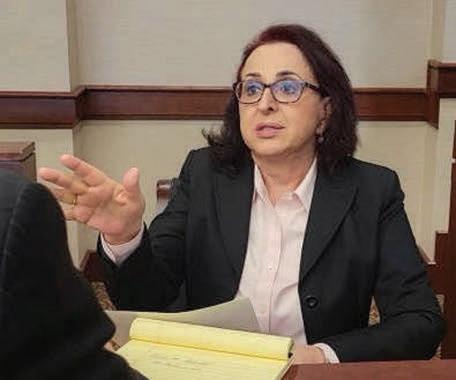
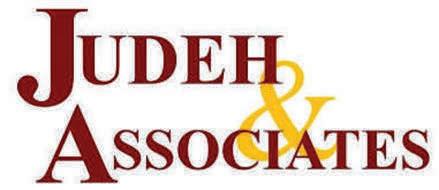
NEW MEMBERS in January
Folake Akande
Mario Bechara Azzi
Krystal Bahri
Lauren Claire Bolt
Hon. Jeremy D. Bowie
Brent Bowyer
Lucy Jean Budreau
Garam Choe
Jordan M. Ewald
Meryl Gardynik
Maggie George
Jordan Goldberg
Brandon Thomas Goldstein
Devon Elizabeth
Graham-Aiyash
Melissa Griffith
Logan Todd Grizzell
Cynthia J. Haffey
Kelsey Marie Hall
Zeina Isabel Hamadeh
Charles A. Hayden IV
Shawn H. Head
Matthew Raymond Hutnick
Jay S. Kalish
Michael Kelly
Andrew Ryan Kravis
Andrew Laux
Daria Suzanne Majewski
Tara McClanaghan
Katie O’Neill Tran
Michael Pereira
Kelsey Anna Postema
Alexandra Helene
Rumschlag
Daniel Rustmann
Michael G. Sarafa
Metecia Smith
Rebecca Sposita
Stephen Thomas Strickland
Muthu Subbu Veerappan
Terri L. Weishaus
Jihan Williams
Latoya Willis
Zaid Zeyad Yatooma
Christine M. Zarycky
OCBA PEOPLE www.ocba.org 31 Business Litigators | Business Lawyers altiorlaw.com | 248.594.5252 Our Partners | Kenneth Neuman, Jennifer Grieco, Stephen McKenney, Matthew Smith, and David Mollicone AND EXPERIENCED Altior Law-Laches_1/8-042024.indd 1 2/22/24 2:07 PM Property Appraiser 30 years experience All Property types Tested Expert Witness Timely – Credible – Efficient – Dependable Jumana Judeh, PhD, MAI, CCIM, MCAO Office: 313-277-1986 Mobile: 313-801-2603 Email: JumanaJ@JudehOnLine.com
Appellate Law
By Lisa R. Bremus
ACROSS
1. Respondent’s appeal type
6. __ culpa
9. Quarto (abbr.)
12. South Korean capital
13. Gallery offering
14. Montevideo loc.
15. Taylor Swift’s musical confession: “I’m the problem, __ __” (2 wds.)
16. Michigan Court of Appeals District I home
18. Unit of speed, briefly
20. Diner
21. Annuls a previous judgment
25. __ decisis
26. One who is legally entitled to inherit
27. “Father of the American cartoon”
29. Temporarily stops a judicial proceeding
30. Actor McBride
31. The __ Fight
35. Actor Tara
36. Pro __
37. Fabric made from plant fiber
41. Appeal allowed after normal time limit has expired
43. Perfect
44. Pol. title
45. Creditors may __ wages to collect a judgment
48. In any way (2 wds.)
52. Completes personnel’s software system: __S
53. Musician Brian
54. Place where a trial is held
55. Explosive
56. __ waiver request
57. Decree
DOWN
1. __: Vegas
2. Collecting a pension (abbr.)
3. Out of stock, briefly
4. Judgment type
5. Napped
6. Angry
7. Poetic “before”
8. Certify
9. Allocation
10. __ of fact
11. Bizarre
17. Rodent
19. From this time forward: __forth
21. Cassette tape
22. At the age of (Latin abbr.)
23. Spy agency, briefly
24. Respectful term of address in South and Central Asia
28. Edges
31. If your appeal is __, your case will likely be remanded
32. Cereal grain
33. Salesperson’s compensation term (abbr.)
34. Parent
35. Motion for __ from judgment
37. Appeal of __
38. To care, not mend a sock: “Give __ __” (2 wds.)
39. Lacking legal justification: case without __
40. Bond author Fleming
42. Appeal by __
46. Compass letters
47. Garden tool
49. Singer DiFranco
50. Capt. Jean-__ Picard
51. Allow
Answers can be found at ocba.org/laches
32 LACHES MAGAZINE ADJOURNED
57 34 38 39 36 40 42 32 29 35 37 31 30 21 22 23 24 25 26 28 15 14 13 10 1 2 3 4 5 9 8 7 6 11 12 19 18 17 16 33 27 20 54 53 52 51 45 46 49 50 44 43 48 47 41 56 55
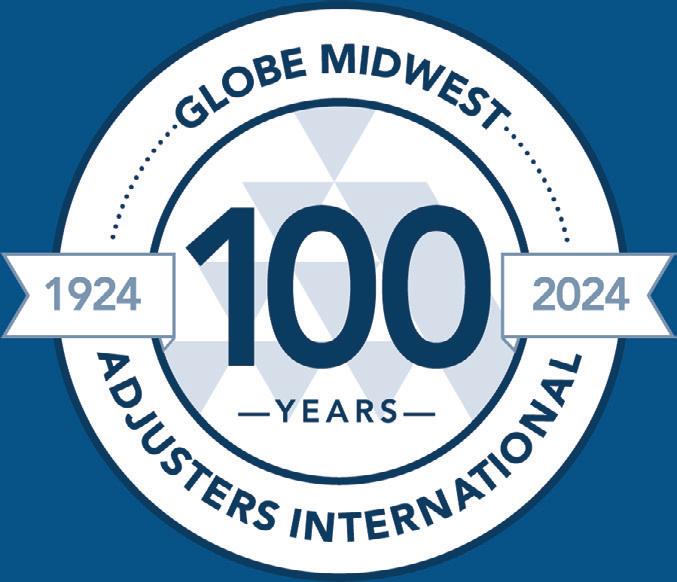


100 YEARS OF PROPERTY INSURANCE SETTLEMENTS. To learn more contact: Stuart Dorf, JD, CPAU at: 248.915.0399 | sdorf@globemwai.com globemwai.com 100 YEARS OF UNPARALLELED RESULTS.
If you are receiving duplicates of this magazine, please call the OCBA at (248) 334-3400.
We are trial lawyers who pursue justice for those whose lives have been shattered by the misconduct and malpractice of others.
Nearly all our clients come to us at the recommendation and referral of another lawyer or one of our own clients. We work hard each day to earn and keep our reputation as lawyers who honor referrals and take superb care of other lawyers’ clients, family members, and friends in times of crisis and need.

Craig
Thomas
Catastrophic
>
injury cases
Auto
The Googasian Firm, P.C.
> Malpractice litigation >
claims
M. Weber • George A. Googasian
H. Howlett • Dean M. Googasian
248-540-3333
The Googasian Firm, P.C. 6905 Telegraph Road, Suite 140 Bloomfield Hills, Michigan 48301
540-7213 (fax) contact@googasian.com
667 | April 2024
County Bar Association 1760 S. Telegraph, Suite 100 Bloomfield
www.googasian.com
(248)
Number
Oakland
Hills, Michigan 48302-0181
LACHES




















































































 Team 4, led by Judge Sima Patel, shares its presentation on employment law and workplace harassment with fellow Inn members in February 2024.
OCBA Inn of Court members participate in small-group discussions during Team 5’s presentation on civility and ethics in March 2023.
Participants enjoying dinner and great conversation after the Team 7 presentation during the year-end annual dinner at The Village Club in May 2023.
Team 4, led by Judge Sima Patel, shares its presentation on employment law and workplace harassment with fellow Inn members in February 2024.
OCBA Inn of Court members participate in small-group discussions during Team 5’s presentation on civility and ethics in March 2023.
Participants enjoying dinner and great conversation after the Team 7 presentation during the year-end annual dinner at The Village Club in May 2023.















































































































































































